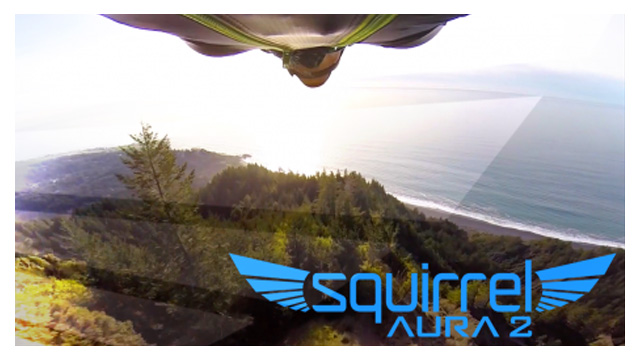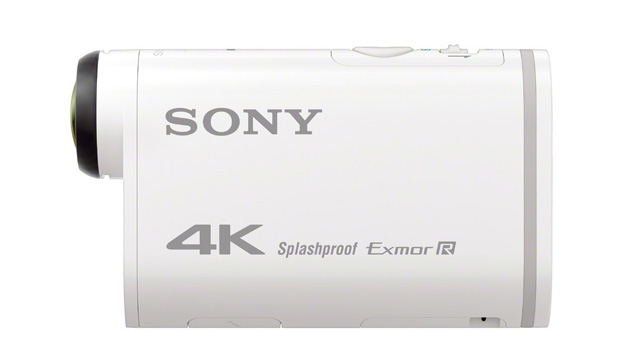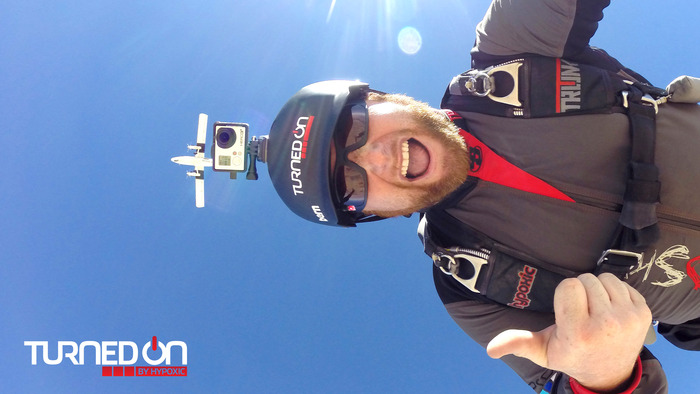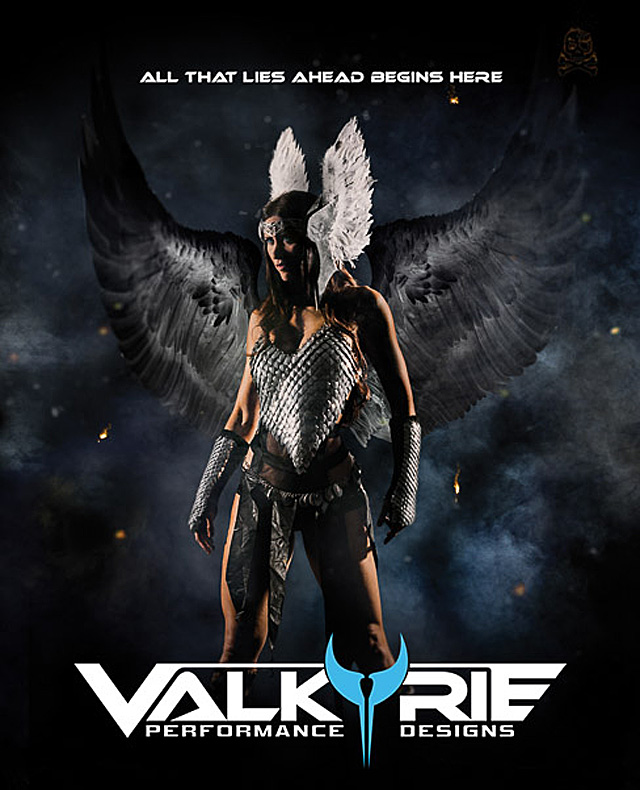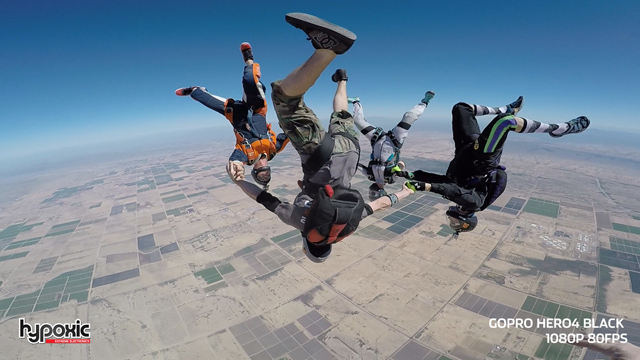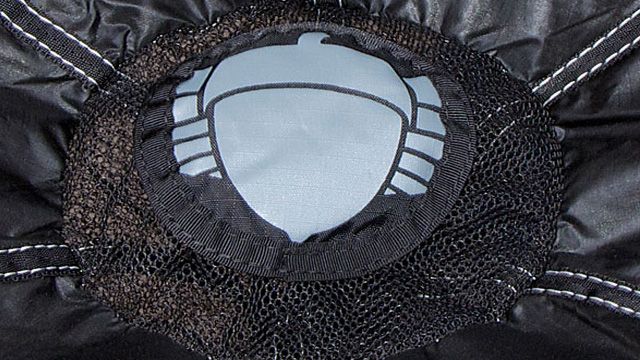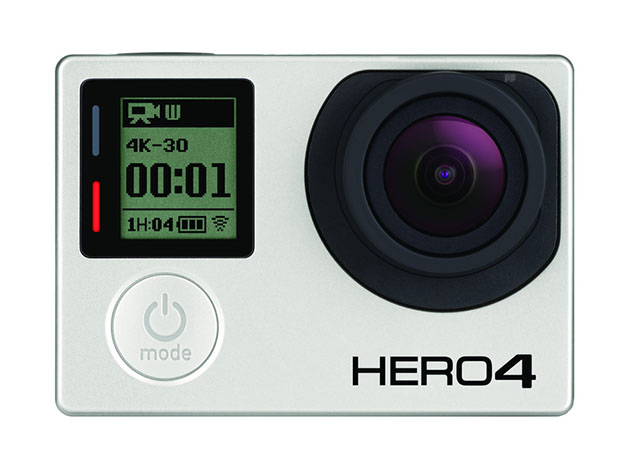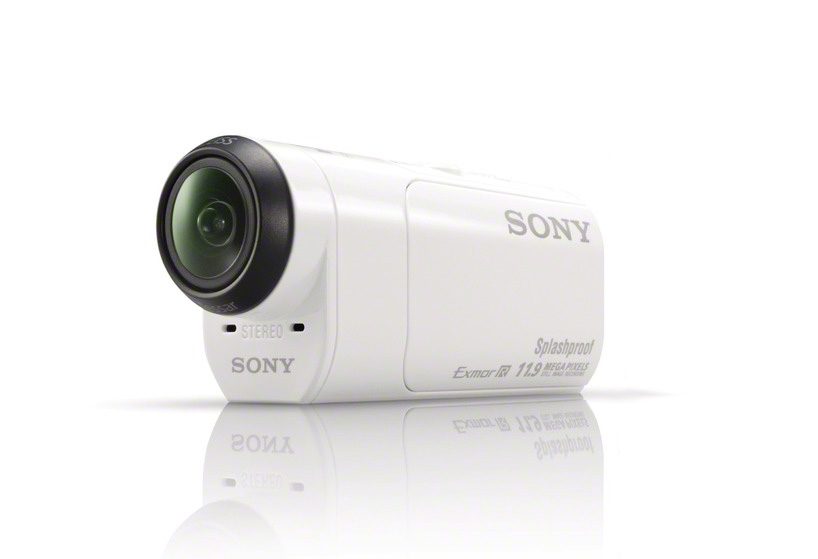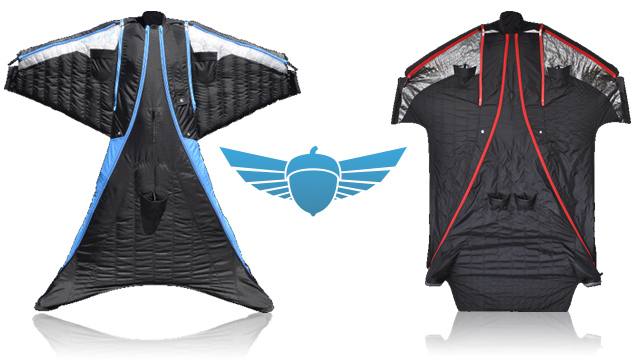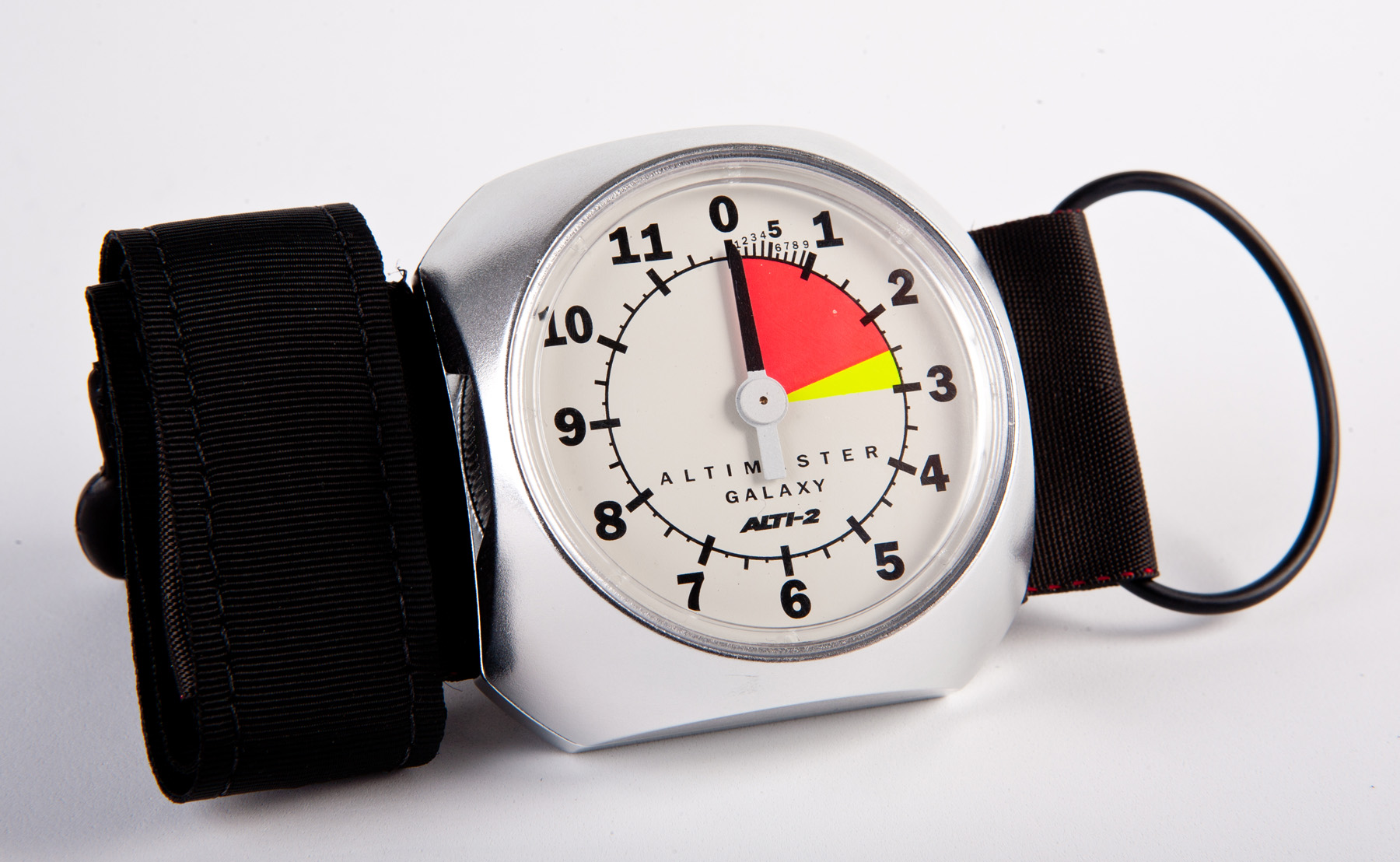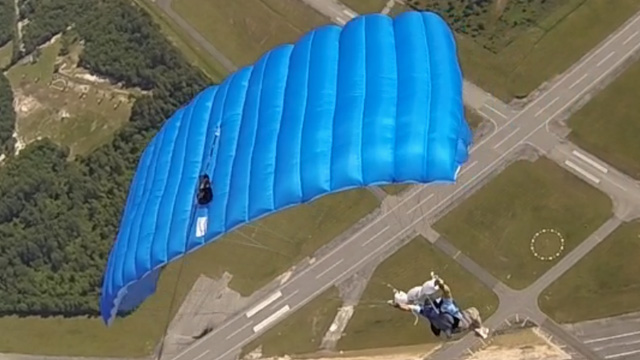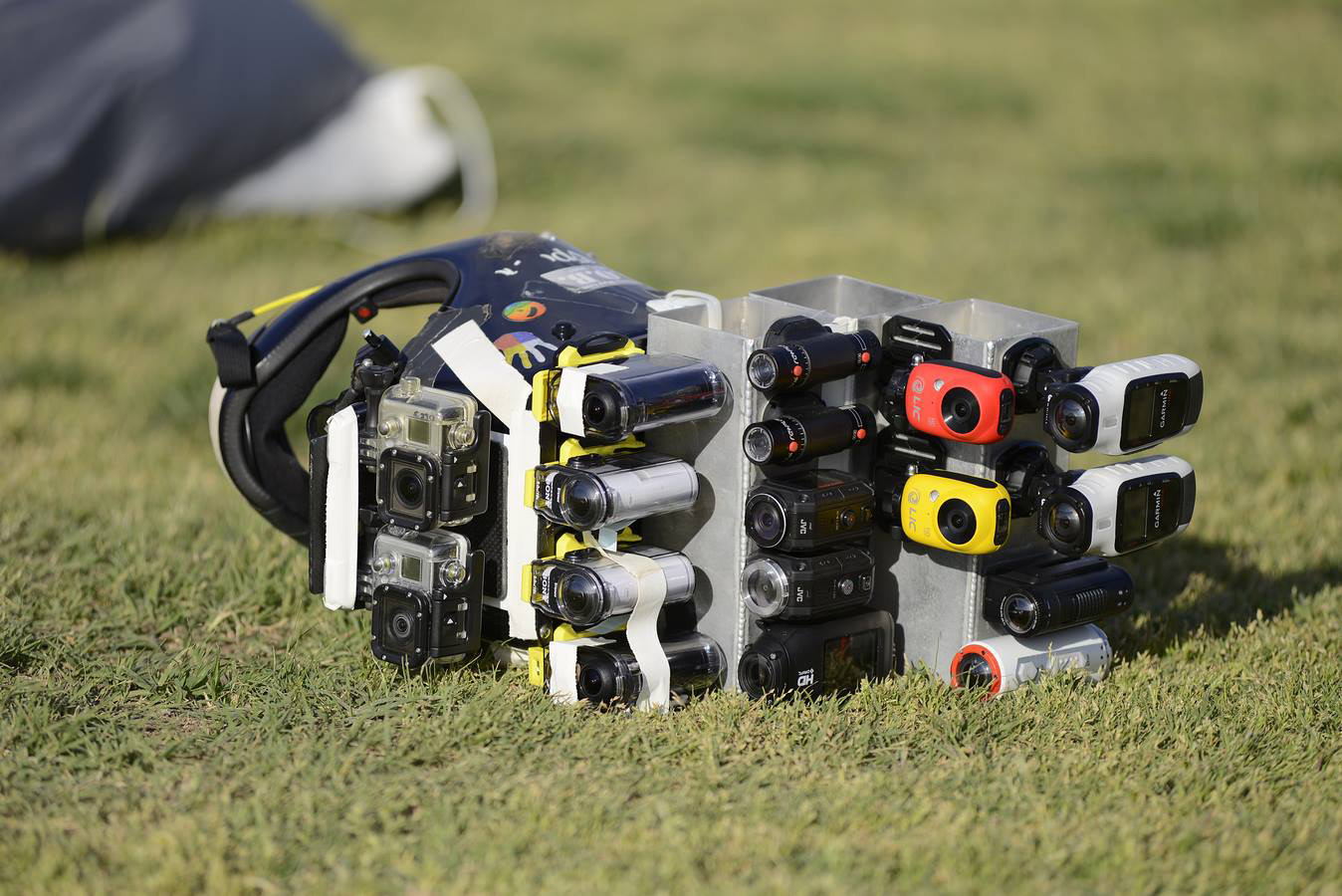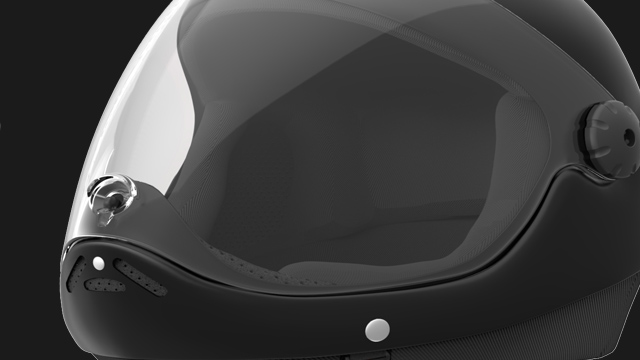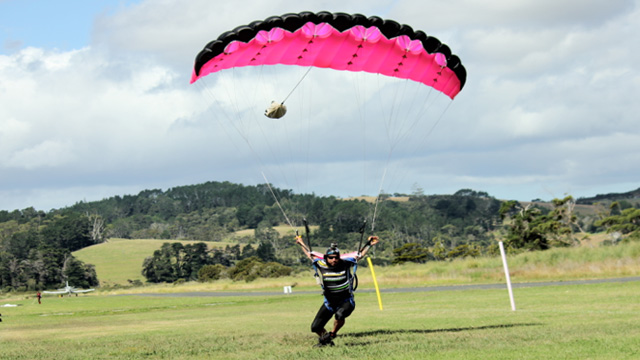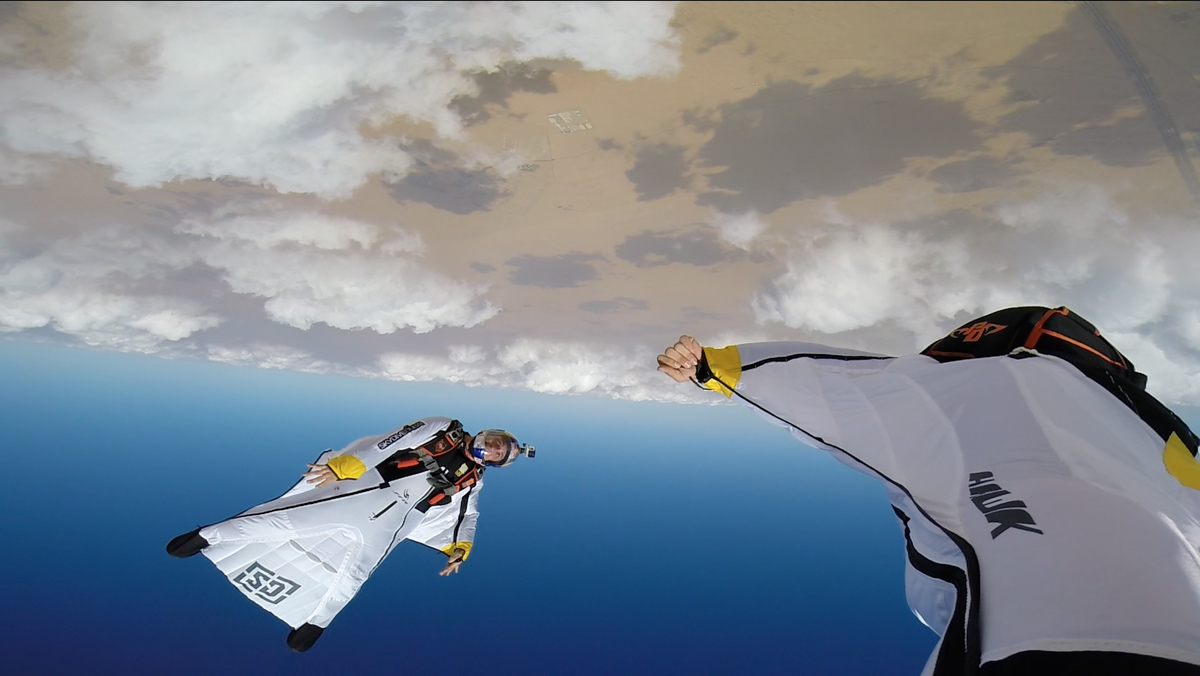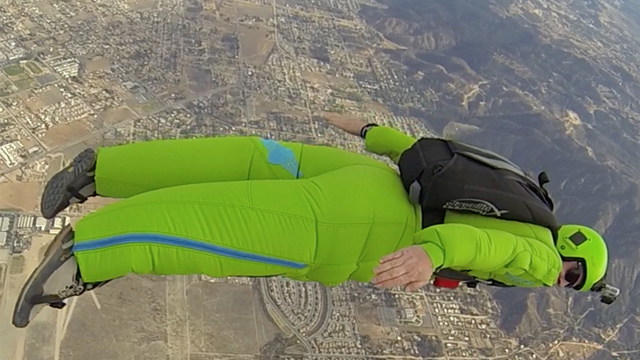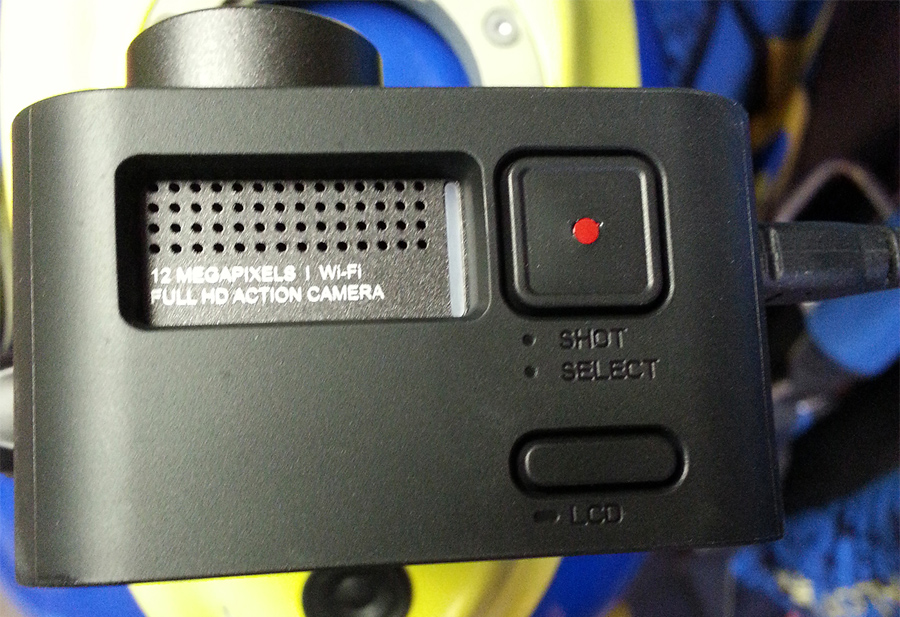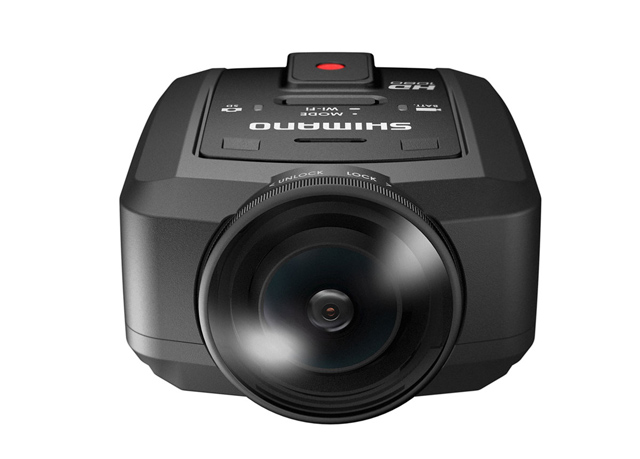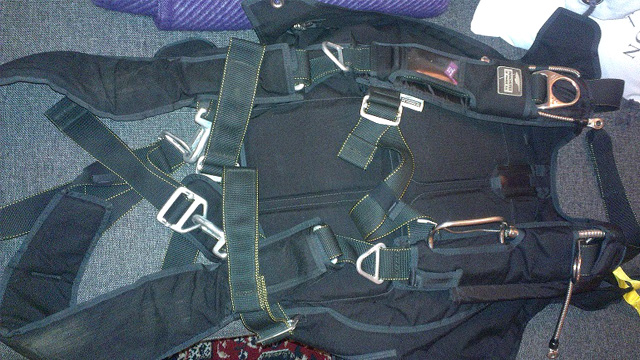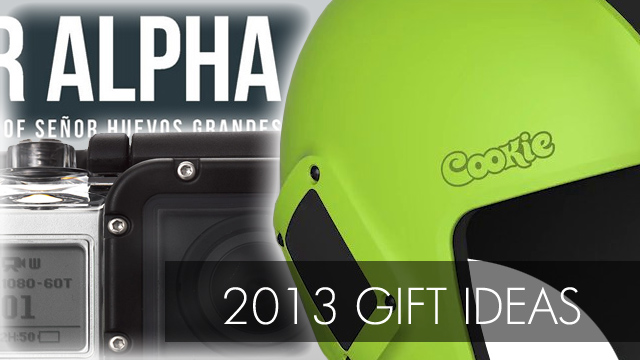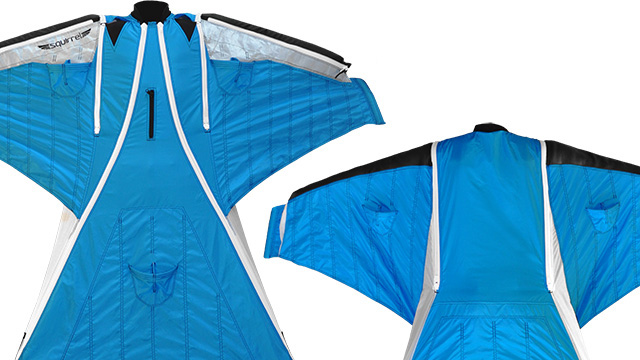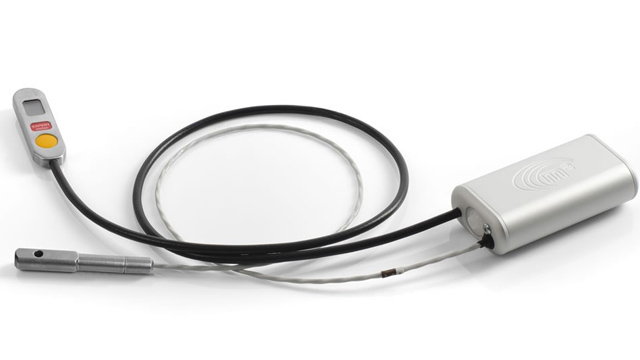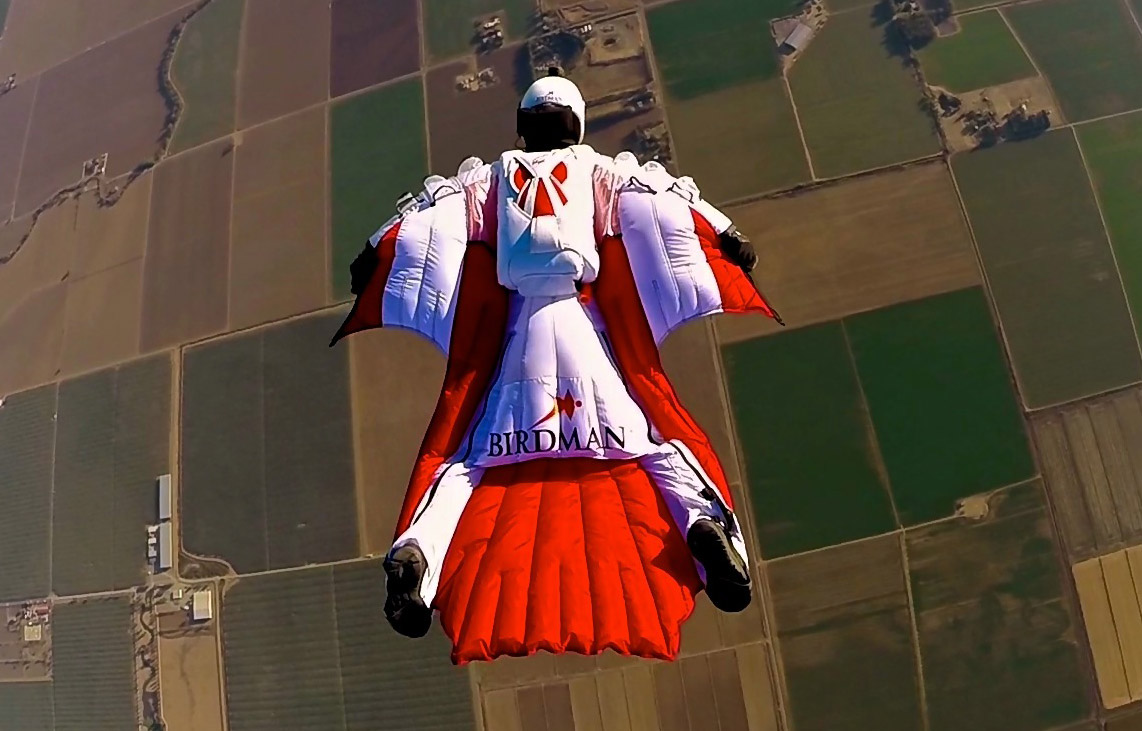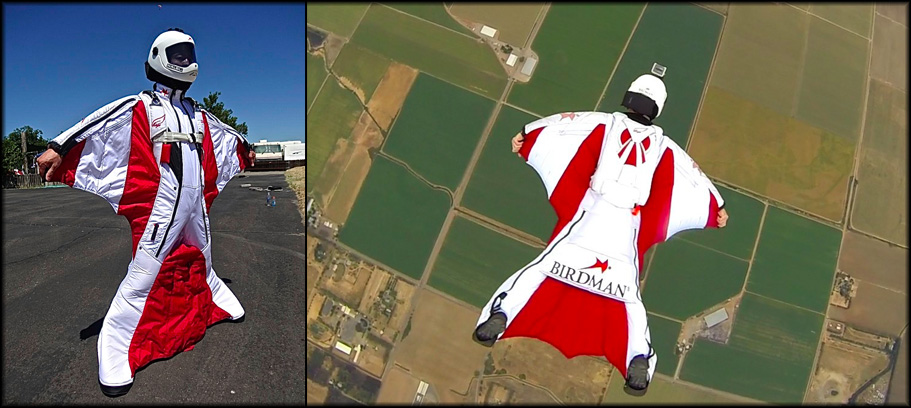Search the Community
Showing results for tags 'gear'.
Found 157 results
-
With the increased popularity of action cameras over recent years it's not surprising that we've seen an increase in the manufacturing of third party hardware that makes use of the GoPro camera to add additional value to users. Hypoxic recently released their Turned On product, which allows skydivers to see whether or not their camera is recording or whether there's any errors, without having to ask their buddy. The company Alti-Force has just released a product of their own that attaches to the GoPro camera and like the Turned On device, will seek to add some extra value to skydivers. When in use the Alti-Force Sensor Pack will be able to overlay information about your flight over the video. The device is able to record and display both altitude and the acceleration/G-Force of your jump. The visual representation of Gs can be useful for those looking to maximize performance, by using the information to identifcal optimum body positioning and technique. Features Subtitled video playback for your GoPro® camera Altitude subtitles selectable as feet or meters Acceleration G-force subtitles selectable as X-Y-Z axes or total magnitude Compatible with GoPro® Hero4 Black and Silver, Hero3+ Black and Silver, or Hero3 Black Fits in GoPro® cases with BacPac™ backdoor² (not included) Compatibility GoPro® Hero3 Black – YES – firmware v03.00 GoPro® Hero3+ Silver – YES – firmware v02.00 GoPro® Hero3+ Black – YES – firmware v02.00 | v03.00* GoPro® Hero4 Silver – YES – firmware v02.00.00 GoPro® Hero4 Black – YES – firmware v02.00.00 All efforts will be made to maintain compatibility with future firmware versions but cannot be guaranteed *v03.00 disables camera’s USB mode, use of memory card reader is required Any that support .SRT subtitle files (check your player’s specifications) Includes most TVs and VLC media player (for all OS platforms) Video must be played via USB mode or memory card reader If copied off camera, video .MP4 and subtitle .SRT files must be copied to same location Note: Windows® Media Player and QuickTime do not support .SRT subtitles Camera Modes The Alti-Force Sensor Pack records data/subtitles in Video Mode only. All standard video resolutions and frame rates are supported. The Alti-Force Sensor Pack does not support Time Lapse and Looping video modes, and is disabled in all Photo modes. Mechanical Size: 2.36 x 1.38 x 0.40 in (60 x 35 x 10 mm) Weight: <1 oz (18 g) Electrical Standard camera voltage: 3.6v (powered from camera) Minimal current draw: <2 mA typical Accelerometer Tri-axial | ± 16 G’s | 0.1 G resolution Barometer Absolute Pressure: 300 to 1100 mbar | ~0.1 mbar resolution Altitude range: -2000 to 30,000 feet | 1 ft resolution Pressure to Altitude conversion assumes standard conditions. Sampling RateHero 3/3+: approx 4.5 samples per second Hero 4: approx 6.5 samples per second Subtitle Settings Altitude: Feet | Meters | Both | None Acceleration: XYZ axes | Total magnitude | All | None G-bar: On | Off Temperature: °F | °C | None — Additional options — Data CSV file (saves all raw sensor values): On | Off Altitude offset: Feet only More information on the Alti-Force Sensor Pack can be found on the Alti-force website.
-
The latest addition to the Squirrel inventory has been made available for pre-order this week. The Aura 2 will be the successor to the originally Aura suit, which saw favourable reviews and quickly established itself as a popular BASE jumping suit. While no information has been provided yet by Squirrel, as to the specifications and features of the new suit, it's expected that the Aura 2, like its predecessor - will be a BASE focused wingsuit. Even with the original Aura design though, Squirrel ensured that the suit was catered as much as possible to skydivers, with several features including a 'Skydive Mode'. More information about the Aura 2 will be provided when it's released by the company. But for now, all we have is 40 seconds of teaser footage.
-
Sony FDR-X1000VSony have started off the first quarter of 2015 with a couple of action camera announcements that are likely to excite fans of the Sony series. At CES 2015, which was hosted last week, Sony unveiled two new models of action cameras, venturing into the 4k action cam market. Sony are no newcomers to 4k recording products and have been selling 4k recording devices for a few years already, but moving in the direction of smaller and cheaper recording devices such as action cameras is a big step towards general consumers. Along with the new announcement for the 4k action camera, was the announcement of a new HD action camera, a new version of one of the company's popular cameras. The first of the two cameras announced at CES is the FDR-X1000V, the 4k action cam product that will aim to compete with the new GoPro Hero 4. The X1000V will be able to record 4k video (3840x2160) at 30fps, with focus also being placed on enhancements to the HD recording options, stabilization and frame rate. The enhancements in stability come from an upgrade to the company's trademarked "SteadyShot" technology, which is promoted as being 3 times better at handling certain vibrations. With stabilization being such an important part of recording skydiving footage, it will be interesting to see how the X1000V does in comparison to the other Sony action cams on the market. Also beneficial, especially to skydivers - is the new, enhanced wind noise reduction. While the focus of the X1000V definitely appears to be the ability to record in 4K, the camera also boasts some impressive recording abilities at both full HD and standard HD. Up to 120fps is supported for Full HD recording, while Standard HD allows for 240fps recording. Sony HDR-AS200VThe second camera to be announced is the new HDR-AS200V. Last year Sony unveiled the AS100V, which in turn became quite a popular action cam. The AS series of Sony action cameras have in fact probably been the most used Sony product for skydivers, with the releases of the AS15, AS30 and AS100 in just a few short years. We've done extensive testing on some of these models in the past, and they have always performed well, with the Sony AS30 coming out on top in our Action Cam Shootout last year. The AS200V will receive the same boost in stabilization and noise reduction as the above-mentioned X1000V, while offering recording in 60fps at 1080p, 120fps at 720p and 240fps in the WVGA video format. New Features For X1000V and AS200VSony have extended most of the new features they have developed to both of these cameras, and it appears that the only real differences between models will be the ability for 4k recording on the X1000V, as well as a more enhanced underwater casing that is provided with it. Built in GPS & Action Cam Movie Creator Action Cam Movie Creator is software that is included with both the models and allows for the easy creation of videos, which can also use the built-in GPS to display the GPS details in an overlay of the video. Highlight Movie Maker For those who don't want to spend the time creating a movie from a series of clips, the Highlight Movie Maker will offer the ability to quickly and easily produce smaller mp4 video format highlights of a video, along with being able to add music to the video. The Highlight Movie Maker uses an algorithm to detect where the action is happening within the video, and then cuts out scenes which it detects as unimportant. Live View Remote With the new cameras come a new live view LCD remote. The Sony RM-LVR2 is a waterproof (to 3 meters) offers extensive control over both the AS200V and the X1000V, with the ability to control recording, playback, deletion of files. The live view functionality also means that you'll be able to get a clear preview of what is being recorded. Release Dates & Pricing: The X1000V and AS200V will be available from March with the X1000V being priced at $500, packaged with the enhanced SPK-X1 waterproof case. For the live view remote bundle, you will be paying $600. The AS200V will go for $300, and include the SPK-AS2 waterproof case and tripod mount. The live view remote bundle will also cost $100 extra, and set you back $400.
-
In May of 2014 the skydiving-focused electronics company Hypoxic began a Kickstarter campaign that sought out a goal funding of $30,000 in order to develop a status indicator for the GoPro action camera. Despite dominating the market for several years, neither GoPro or its primary competitors come with a feature or piece of hardware that allows the user to easily determine the status of the camera or its recording. For sports where the GoPro is mounted out of sight, such as the popular helmet mounting method, this can often cause hesitation when trying to remember whether you may have pressed record or whether you put the SD card back. Hypoxic's goal was to try and provide a useful and easy way of determining whether the camera is functioning as it should, while also removing that hesitation from the minds of the jumper. As quoted from the Kickstarter page: "In our sports, these uncertainties are not just unsettling: they’re dangerous. As an athlete, you know: before riding down this line, starting this race, jumping out of this plane, launching down this mountain, you need an absolutely clear head. Nothing good can happen when personal safety takes a backseat to a blinking light." By the end of June last year, the Kickstarter campaign had raised $43,049, more than $13,000 over the original target amount. Incentives for backers ranged from stickers for those that pledged $5 or more, to Turned On units with early shipping for backers that pledged over $180. Over the past 6 months the Kickstarter units have been sent to the backers of the campaign and were well received. The Turned On units have now begun shipping to outlets and are available for public purchase. What Does It Do?The Turned On unit makes use of 3 colored LED lights to provide information as to the status of the camera. When the camera is recording, the light will be solid red. When it is on standby a blue light will be displayed. When an error is present it will display either a solid yellow or a flashing yellow light. When the light is flashing yellow, it indicates a potential impending interruption to recording, such as low card space, low battery or high temperature. A solid yellow light indicates an error and in this case, the camera will not be able to record, such as in situations where the card is missing or corrupt. The device will work in all modes, and show the active recording light whether you're recording video or shooting a series of images in burst mode. What separates the Turned On indicator from other indicators on the market is the detailed level of information provided. Most other indicators simply use an on/off system that will display whether or not the camera is recording or even just whether the power is on, which is often unreliable - especially in cases when the camera may be in stand by mode. Compatibility and SupportCurrently there is limited compatibility with the Turned On, and will require one of the following GoPro cameras: GoPro Hero 4 Black, GoPro Hero 4 Silver, GoPro Hero 3+ Black, GoPro Hero 3 Black. Supported Versions GoPro Hero 4 Black - v1.02.00 GoPro Hero 4 Silver - v1.0.2.00 GoPro Hero 3+ Black - v1.04.00 GoPro Hero 3 Black - v3.00.00 There are two build of the Turned On available, the H3+/H4 and the H3. The H3+/H4 is designed for use with the GoPro Hero 3+ and GoPro Hero 4 cases, while the H3 model is for use with the GoPro Hero 3 case. Hypoxic are already looking to expand the development to include more of the GoPro models and claim to be exploring compatibility that goes back to the GoPro Hero 2. Where to Get One?Dealers that are listed with selling the Turned On units are as follows: Chuting Star - Skydive the Farm, GA Patrick Kaye - Skydive Dubai, Dubai, UAE Para-Gear - Skokie, IL Ranch Pro Shop / Tonfly USA - Skydive the Ranch, NY The Drop Shop - Skydive Chicago Gold Coast Skydivers - Gold Coast Skydivers, LA Sunshine Factory - ZHills, FL Rock Sky Market - Chicago Skydive Center, IL Xtreme Video - Skydive Carolina, Chester, SC HYPOXIC - Chandler, AZ As of the release of this article, the MSRP for the Turned On units was listed as $99. More information and installation guides can be found on the Turned On Website.
-
Over the past several weeks Performance Designs have been dropping hints about their latest product, with a cryptic advertisment in Parachutist magazine at the end of September, that had a few readers scratching their heads and trying to establish what exactly PD were advertising. Clearly the marketing tactic worked, as interest grew about just what it was about. One community member, "Zlew" - suggested that the advert may be about a product with the name "Valkyrie", based off the design and the style of the 'V' that was present in the image. Today Performance Designs have confirmed this suspicion, with the public announcement of their this new canopy, the Valkyrie. The Valkyrie is a mean little 7-cell design with inflatable stabilizers/wingtips, and is quite similar to the Peregrine in both look and planform. It's a freefall canopy with focus on quality openings at terminal speeds. - Zero-Porosity material. - Standard configuration: Collapsible drawstring slider and 500 Orange Vectran, optional RDS and 300 Orange Vectran (for competitive/subterminal use) - Sizes: The Valkyrie We spoke to Performance Designs about the Valkyrie, and they addressed some of the questions one may have about the company's new canopy. Q: Who is this canopy for? A: This canopy is far more responsive than a Velocity or Comp Velocity, and not lacking in power or speed. It was designed for expert skydivers who are experienced and highly competent on high performance, cross braced canopies. If you are very proficient jumping a Velocity or Comp Velocity and want to take it to the next level, this is the canopy for you. "The openings are amazing. Best opening canopy I can recall jumping. Never once got it to open hard no matter what I tried (freefly to a quick pull, tracking hard to a pull, etc)." - Ian Drennan,PDFT Q: How are the openings? A: This canopy opens like a dream. Even though it is extremely responsive to input, you will find the openings to be smooth, well-staged and with less tendency to search for a heading during inflation. Q: How are the flight characteristics? A: The Valkyrie is more responsive on all controls. The flare and stopping power of this canopy is incredible, and it also has great glide capabilities. All around, this canopy is awesome to fly. But don't take our word for it. Q: When can I get one? A: We will be accepting orders from PD's Authorized Dealers on December 1, 2014. Standard crossbraced production time will apply to the Valkyrie. These lead times are posted on the performancedesigns.com home page. Q: How do I buy one? A: The Valkyrie will be sold through PD's Authorized dealer network. Interested customers should contact their local dealer to discuss if this canopy is right for them, and should be prepared to demonstrate expert canopy pilot skills and/or provide references. Potential pilots should be highly competent on a more traditional crossbraced canopy, prior to considering a Valkyrie. "The Valkyrie is a carving machine! You get so much more lift, control, and smooth flight when carving a swoop, than with a Velocity. The toggles are more responsive, and flare a lot more powerful." - Alejandro Ramos, Tribu Freefly Q: When will stock canopies be available? A: We are planning on producing stock canopies by early February 2015, but are anticipating heavy demand for this stock. The best way to assure a quick and efficient Valkyrie delivery will be to place your order in early December 2014. "The feedback we have been getting on this new product is incredibly positive, with regards to openings, flight characteristics and performance. We are very excited to make the Valkyrie available to everyone (*with the required experience)." Comp VelocityWith the ever growing trend of people using the Comp Velocity for every day purposes, we have decided to make changes that will make it readily available for non-competition use. Introductory Retail Price: $3200 Additional for RDS: $250 (instead of standard slider/subterminal use) The standard configuration of the Comp Velocity will include a collapsible drawstring slider, instead of the RDS, and 500 size lines. This will also cause a price adjustment for this product. Retail Price: $3050 Additional cost for RDS:$250 (instead of collapsible drawstring slider/subterminal use) "We have also included a number of additional line options for the Comp Velocity. The new order form will offer 300 or 500 Orange Vectran, 500 or 700 HMA, 500 or 750 Vectran. Current stock will remain with 300 Orange Vectran and RDS. We will begin to include the collapsible drawstring slider & 500 line configuration on our stock Comp Velocities in the near future. We anticipate these pricing, stock and order form changes to occur on or around December 2014."
-
We recently announced that GoPro had planned to release their latest action camera, the GoPro Hero 4. The Hero 4 is set for release this month, and since at the time of our original article, we had little to no footage of what the Hero 4 performed like, specifically in a skydiving environment, we couldn't really make a call on value between the different editions. Hypoxic has now however released a video showing a comparison between the Hero 4 Silver and the Hero 4 Black, and the initial results are a little surprising. View Full 1920x1080 Hero 4 Silver Image View Full 1920x1080 Hero 4 Black Image The video was recorded at 80fps for the GoPro Hero 4 Black and at 60fps for the Hero 4 Silver, though little noticible difference is seen in the smoothness of the video in standard playback. There are however some differences between the two cameras, as can be seen when comparing screenshots of the video. We decided to analyze the screenshots from the video and see who really comes out on top between the Hero 4 Silver and the Hero 4 Black. All example pictures are 1080p (1920x1080) cropped at 100%. The first thing we looked at when examining the video, were the noise levels. In the example shots above, noise can be seen in the gradient of the sky. Noise levels for both these cameras were good, and it is difficult to pick a clear winner, though for this test I would suggest that the Hero 4 Black comes out on top, though still not a bad result for the Silver Edition. Next we took a look at some of the primary aspects of image quality, focusing on sharpness and detail levels. This is where we were quite surprised, with the Hero 4 Silver taking a very clear lead over the Black Edition on sharpness and detail. This is an area where many would expect the top tier camera to perform at its best, and give the buyer a reason to spend the extra $100. Instead we find that the Black Edition lacks in sharpness. In the image above, one can note the sharpness/clarity difference easily by examining the helmet and rig on the top two images. The "Mirage" text is sharp and easily readable on the Hero 4 Silver, while on the Black Edition it's blury and hard to distinguish. Also take a look at the buildings on the top images, on the right of the screenshots. Again the Hero 4 Silver is sharper, both with objects in close range to the camera and in the distance. Comparing the skydiver in the orange and blue jumpsuit on the bottom images, also show you that facial details are picked up much better by the Silver Edition. Finally we looked at the contrast and saturation, and again we were a little surprised. It was much closer between the two cameras with this test and with regards to saturation, neither of the cameras look oversaturated and they both seem to handle the dark gray and black quite well. When examining the socks of the skydiver, it does seem to handle the whites a bit better on the Silver Edition, both are quite close and very much acceptable, but there appears to be a more crisp whiteness in the left image. This test however is hard to establish with certainty, as the increased sharpness in the left image may suggest crisper colours, while the Hero 4 Black's may appear a bit more washed out due to a lack of sharpness in the image. It's important to note that in camera manufacturing, there are variables that can result in batches or individual cameras performing poorer (or better) than the standard. So it's possible that this was the case with the two cameras above. Though whether this is to blame for the Hero 4 Black's lack of image performance, will likely only be told with time, as more footage is shot and released. A much more likely reason for the decrease in performance when looking at grabs taken from a video, as pointed out by the user "cbjetboy" in the comments below. Is that the Black is recording at 80fps as opposed to 60fps. This increase in frame rate is likely to have a negative impact on the result seen from a screenshot, as opposed to as if it had been recorded at a lower fps. It is difficult to say exactly how much of an impact this had on the results, but it seems we will need to wait for further comparative testing before we can come to a solid conclusion. Though when comparing the videos themselves side by side, there is little to suggest that the Black Edition comes out any better than the Silver. Based on what information we do have though, if you assume that both these cameras are operating at their normal performance levels, unless you're looking to use the 30fps 4k recording that's available solely on the Hero 4 Black, these early tests suggest that you may be just as well of sticking to the Silver Edition and saving yourself $100. The Silver Edition also comes with the perc of having a touch screen for easier navigation and image/video previewing.
-
The Squirrel Snatch is a revolutionary new product that sees the first BASE targeted development of a toroidal design for a pilot chute. Although the design has been used extensively in the development of non-sport parachutes for over 40 years, until now it's never been manufactured for BASE or skydiving. The idea was born from a discussion between the company's co-designer and CRW expert, Jim Rasmussen. The toroidal design (also known as a Pulled-Down-Apex design) that the Snatch uses, is a complex and costly product to produce and was no small undertaking by the company. The Snatch has a three dimensional partial toroidal shape and is joined together with two mesh cones, allowing for extremely high drag co-efficiency. Squirrel Wingsuits discuss the differences between the shape of a toroidal design and that of the common pilot chute by saying, "Traditional PCs are two circles sewn together around the edges, typically one of ZP and one of mesh, with a piece of line or webbing connecting the center of each circle together at a specific distance. When pulled from the center of the mesh circle and dragged through a fluid, it inflates into a rough approximation of a pulled-down-apex shape, but with a large amount of distortion and error, with a wrinkled and asymmetric circumference. Imagine crumpling up a single piece of paper until it forms the 3D shape you want to design - it won't look good, nor be an accurate representation of a 3D surface. Yet that is the current basis of traditional PCs: an approximate and inefficient 2D design meant to perform a task that requires a 3D shape." Squirrel used an ellipse with a 7:10 (H:W) ratio, with an axis offset of 20% of the width in the development of the torus. The tangent formed with the cones and partial torus was calculated precisely to ensure that the ZP had a smooth transition with the mesh. This allows for the ability to maintain a smooth error-free perimeter on the pilot chute. Innovation aside, the most impressive part about the Snatch is the enhanced performance over regular double circle pilot chutes. Because of the shape of standard pilot chutes, the surface area is usually met with an imbalance of stress, with some areas being pulled more than others, and material being "loose". The randomness aspect that is present in these regular pilot chutes gets minimized with the toroidal design of the Snatch. Unlike normal PCs which are constantly changing shape as airflow moves around the creases and wrinkles, the toroidal design inflates to its intended shape and remains that way, without the pulsing that is usually witnessed. When inflated, the Squirrel Snatch takes the shape of a 3D object, with specifically calculated gores. This increase in inflation performance is easily seen in testing where far superior stability was witnessed in both wind tunnel and field testing. Symmetry is one of the most important factors in the performance of a pilot chute, and each Snatch is guaranteed to be symmetric, with the build tolerance being set at a stringent 1mm +/-. The focus with the Snatch has not only been on general performance and innovation, but also on safety. Squirrel decided that due to the suggested risks involved with heavy handles, and their involvement in entanglements, that they wanted to produce the lightest possible design, without compromising on durability. The decrease in weight means that bridle entanglements become less likely. The Snatch uses hexagonal carbon-fiber handles for sizes 32, 34, 36 and 38. The 42 featured a pad-patch top with no carbon, while the 46 and 48 are handle-free, for hand held use. The Snatch already has several skydivers wondering whether or not they will be able to use it on their skydiving rig, or whether the company plans to release a skydiving specific toroidal PC in the future, as well as whether or not this is a development that could change the development and focus of PCs in general. Squirrel have open sourced the design, in the attempt to get more BASE jumping what they consider to be a higher performance and safer design. For those looking to build their own toroidal PC, you can get in contact with Squirrel via e-mail and they will provide you with the 2D patterns for all sizes.
-
GoPro have announced the specs and release date for the highly anticipated Hero 4 action camera, which will come in three models. The new series of GoPros are scheduled for release around the middle of October this year, and will feature the standard GoPro Hero 4, a GoPro Hero 4 Silver and then the top of the range GoPro Hero 4 Black. New Key FeaturesSome of the highlights with regards to the specifications of the new GoPro range is the addition of 30fps recording at 4k resolution that is found with the Black Edition, which sees a big step up from the previous models 4k video recording, which only allowed for 15fps recording at 4k. The increase in frames from the Hero 3 will mean that users will find more versatility with their high resolution video recording. Another exciting new addition is that of a touch screen on the Silver edition. While GoPro has always been a reliable camera with regards to build and video quality, one aspect that many have found lacking has been the usability of the camera menus, which are handled with the on camera buttons and a small display. Now GoPro have gone and added what is likely to be a very welcomed addition in that it has introduced for the first time in the GoPro series, a touch screen which will no doubt allow for easier navigation of the menus, as well enabling the ability to preview your images (worth noting that the Hero 4 claims to have a new interface for quicker menu navigation too). It is however unusual that the touch screen feature is only available on the Silver edition and not on that of the more expensive Black edition, nor the entry level version of the Hero 4. The most likely reason for the inclusion in the Silver edition is that GoPro is marketing the new series towards three general groups of people, and the mid-range target market is more likely to desire the touch screen, without having to purchase the LCD "BacPac" accessory, which sells for another $80. Though of course it is still possible for one to use their smartphone as a remote for the camera. As customary with a new GoPro release, the company has focused on increasing the general image quality achieved and further enhancements have been made on ensuring better quality in low-light. GoPro Hero 4 Black The GoPro Hero 4 Black, is as mentioned above, the top of the range for the Hero 4 series and thus the most powerful of the lineup. A new processor is claimed to be twice as fast as that found in it's predecessor. The Hero 4 Black will not only have video performance enhancements, but also step up the game with far superior audio recording. There are three modes of shooting with regards to field-of-view: Narrow, Medium or Ultra Wide. There will be the ability to manually adjust settings like ISO limit, exposure and colour for both video and photos. The camera will include built-in Wi-Fi and Bluetooth. Waterproofing down to 40 meters will be standard. GoPro are seemingly targeting the Hero 4 Black to those looking for the absolute best quality and features available in an action camera, specifically professional use and dedicated adventure sports enthusiasts who are looking to create high quality video footage using the camera. The Hero 4 Black will cost $500 on release. GoPro Hero 4 Silver The GoPro Hero 4 Silver seems to be targeted to your average action cam user, from the weekend surfer to the seasoned hiker, or even tourist. The touch screen that is included on this model will make it easier to navigate and preview what you've taken. This is especially useful for those who want to use the photographic functions and treat it as both a still camera and video camera. The image sensor on the Silver, like the Black - allows for 12 megapixel images at 30fps. This model is still more than adequate to provide quality video footage and also offers 4k resolution video recording, but only at a maximum of 15fps. With functionality such as Wi-Fi, Bluetooth and Waterproofing being the same as that of the Black, one can see why there is only a $100 price difference between the two. The Silver will sell at around the $400 dollar mark. GoPro Hero 4 The Hero 4, is the entry model for the series and comes in at an extremely affordable $130. It records in full 1080p resolution at 30fps or 720p at 60fps. The sensor of the camera allows for 5 megapixel images, offering 5fps bursts. The market for this entry level camera would be those looking to enjoy the benefits of an HD recording camera, while not having to fork out more than they need to. The use of action cameras in every day life has become exceedingly common and this camera will offer more than enough for a large portion of GoPro users. This camera could also work for those who are perhaps wanting to try something brave with their camera to get a certain shot, but do not want to risk the potential damages to a higher priced model. We haven't seen much video footage yet, so it is difficult to put these models side by side to see exactly what one can expect from each one, and the difference in quality between models - but it will no doubt only be a matter of time before we see what this latest range is capable of.
-
Sony has unveiled its latest action camera which focuses on reducing size. The Sony Action Cam Mini (HDR-AZ1VR) was announced earlier this month at the IFA 2014 electronics show in Germany. While Sony's action cameras have always been small, the electronic giant decided that they could reduce the size even further by removing the GPS functionality from within the camera and instead moving it to an accompanying wrist-mounted device. The Sony AS30 and Sony AS100 weighed 90 and 67 grams respectively. The new Action Cam Mini weighs in at 4 grams lighter than the AS100, at just 63 grams with the battery included. The size of the camera itself is quite a bit smaller than both the AS30 and AS100 with a Width/Height/Diameter measurement of approximately 24.2 x 36.0 x 74.0 mm, while the AS100 had a height of 46.5mm. The smaller size is going to be good news for skydivers who are looking to minimize the risk of snag for cameras that are helmet mounted. As to be expected the Action Cam Mini will shoot in full HD with options to either shoot at 1080p at 60 or 30fps, or to shoot at 720p with the option for 120 fps slow motion recording. The camera will include an F2.8 Zeiss lens with a 170 degree field of view and an Exmor R cmos sensor. Still photographs can be shot at an impressive 11.9 megapixels. It will also include Sony's trademarked SteadyShot image stabilization and be splash proof, with a waterproof housing included that allows for 5m of depth protection. The wrist mounted device that comes with the Sony Action Cam Mini allows for data transfer between the camera and the internet, allowing users to live stream camera footage. Something else the wrist mount does that may prove invaluable to those who have the camera mounted, is that it both acts as a remote and offers live view. This will allow users to see exactly what is being recorded and adjust body position if needed, to achieve specific angles. It can control up to five cameras at once and will be water resistant. While we have yet to see any footage from this incredibly small camera, if Sony's other action cameras are anything to go by, we can expect a lot from the Sony Action Cam mini. During our action camera shootout we were extremely pleased by the results of the Sony AS100, which took the top spot. Release date for the Sony HDR-AZ1VR is late October. Specifications Image sensor 1/2.3-type back-illuminated Exmor R CMOS sensor with 11.9 megapixels (effective, approx.) Image processor BIONZ X Video formats XAVC S: 1920x1080 60p/50p(50Mbps) 1920x1080 30p/25p(50Mbps) 1920x1080 24p(50Mbps) MP4: PS: 1920x1080 60p/50p (28Mbps), HQ: 1920x1080 30p/25p (16Mbps), STD: 1280x720 30p/25p (6Mbps) SSLOW: 1280x720 120p/100p (6Mbps) VGA: 640x480 30p/25p (3Mbps) HS120(HS100): 1280x720 120p/100p (28Mbps) Lens type ZEISS Tessar® F2.8 Angle of view SteadyShot OFF: approx. 170° SteadyShot ON: approx. 120° Image stabilisation SteadyShot Audio Stereo microphone Data Multi/Micro USB Terminal (Supports Micro USB compatible devices) Wi-Fi/NFC GPS Dimensions WxHxD 24.2 x 36.0 x 74.0 mm (approx.) Media card compatibility MP4: Micro SD/SDHC/SDXC Memory Card (Class 4 or higher), Memory Stick Micro™ (Mark 2) XAVC S: Micro SDXC Memory Card (Class 10)
-
Squirrel have recently released two new products to their wingsuit inventory, with an entry level wingsuit called the Hatch and an advanced wingsuit called the Colugo 2. The Colugo 2 was announced for release in June, but was delayed until the Redbull Aces event, which saw the testing of technology included in the suit. Andy Farrington who was flying a Squirrel prototype which included this new new technology found in the Colugo 2 came first in the event. Colugo 2The original Colugo suit was met with positive reviews from owners of the suit, with many noting how quick it was to start in a BASE environment. The Colugo 2 has taken the strengths of its predecessor and included new technology and enhancements in order to make it an even stronger wingsuit. The Colugo 2 has a smaller surface area than the original with a slight change in the arm wing design. These changes were made to increase the efficiency of the profile and leading edge. Squirrel advise that while the Colugo 2 is an ideal choice for experienced wingsuit BASE jumpers, the Aura remains the best suit for more technical exit points. The Colugo looks to be great for both BASE jumpers and skydivers, with the suit catering well to glider-performance focused based jumps and skydive flocking. A better trim speed and glide range makes the Colugo 2 fly both further and faster than the original Colugo wingsuit. The handling of the C2 is said to be far superior to that of the original Colugo, with a thinner profile and more efficient leading edge. The C2 is all about speed as well, with the reduced surface area and less drag - you can expect to experience higher speed than those produced by the Colugo. The Colugo 2 from Squirrel is an agile mid to large sized wingsuit that aims to provide high performance flying in a competitive slalom environment, focusing on carving and speed. Though the suit is also able to provide pilots with quality floating. One of new features on the Colugo 2 is the AFLE (Andy Farrington Leading Edge), as they've called it. The AFLE is a new design of the leading edge, where the arm zipper on the wing chord has been moved to increase the amount of 'effective edge', in turn improviding the shape and smoothness - which then increases performance. Pre-orders are now open with the suit expecting to ship by the end of August. Read more about the Colugo 2 Wingsuit HatchThe new Hatch suit focuses primarily on being the easiest suit to fly, aimed at beginner wingsuiters who are looking for something easy, comfortable but also reliable. The Hatch has many of the features found on the other Squirrels suits, including the RAD system, tri-layer leading edge construction, reinforced inlets and innie-outie zips. The Hatch doesn't require cutaway cables, and in turn allows for direct access to the risers and brakes during and after deployment. A safety feature that Squirrel feel is vital to every wingsuit. The leading edge of the suit is said to be based on the tried and tested method Squirrel have used in their other suits of combining both comfort and performance. The Hatch is certainly aimed at those looking to purchase their first wingsuit and for skydivers that are new to wingsuiting. Though Squirrel seek to stress that the Hatch is not only for beginners and is a competent flyer in situations where agility and versatility are required. It is also recommended as a good suit for more advanced wingsuit pilots who may be new to backflying or acrobatics and are looking for a comfortable, low surface area suit to practice with. Prior to the release of the Hatch, the Swift seemed to be Squirrel's go to suit for less experienced pilots looking for something easy to fly. It will be interesting to see how the two suits hold up against each other. Read more about the Hatch Wingsuit
-
Altimaster Galaxy We all know there are some hot debates in our sport: RSL or no RSL, AAD dependency, and exit separation are well-known dead horses. Another topic certainly worthy of discussion is the choice between analog and digital altimeter displays. Asking that question will yield a variety of opinions (no surprise there) and will likely be inconclusive. First, a clarification: this discussion revolves around the altimeter display, not the underlying hardware. Altimeters with mechanical internal aneroid capsules have analog displays; those with electronic pressure sensors can have either a digital or analog display. Now that we have cleared that up... Analog dial faces of all types commonly have numerical graduations and colored segments to indicate the status of what is being measured. Alti-2’s Altimaster Galaxy, for example, is first graduated in thousand foot increments starting at the 12 o’clock position (zero). There are yellow and red caution zones placed at commonly used altitudes to provide a visual warning at a glance. Digital displays, like Alti-2’s N3, provide a numerical altitude reference. N3 provides a three-digit decimal altitude in free fall and four digits under canopy. So – which is better? It really boils down to three things: familiarity, specific application, and personal preference. Many skydivers stick to what they learned to use as students. Later in their skydiving career they may choose to “re-train” that familiarity and transition to a digital display. I did so myself when Neptune hit the market nearly ten years ago and have been a huge digital display fan since then. Application brings a different frame of reference entirely. Let’s take a look at two commonly used analog dials, starting with the temperature gauge in your automobile. My dear old Dad taught me to look at my gauges periodically like a pilot does cross-checks. A quick glance at the temperature gauge should show the pointer dwelling just slightly left of center, or about 40% of its travel. I have no earthly idea what specific numerical data that conveys – I glance at the gauge, my brain processes the placement of the needle based upon my training, and I know that I am good to go! Now consider the gauge on a fire extinguisher which contains a small green segment and a large red segment. A quick glance reveals the pointer dwelling in the green or the red – good or no good. In both of these cases, an analog display is preferable to the way I do business. Altimaster N3 What about skydiving? From day one we are asked to apply specific action to specific performance altitudes. As an AFF Student, we may be taught to recognize 5,500 feet on our altimeter to trigger a critical action: wave off and pull. It can be argued that the direct conveyance of that numerical data from a digital display eliminates the need for the brain to convert the pointer’s indication on an analog dial face into numbers for an action to be triggered. If an AFF Student recognizes 5,500 feet on his digital display, it directly sends him into action. Then there is personal preference. Electronic altimeters with a digital display often have other features like logbooks, timers, and the like that take more time to learn. Some skydivers just love the simplicity of turning a knob to zero the pointer and off they go. Mechanical/analog altimeters are usually more economical for skydivers on a budget. Electronic devices require power from replaceable or rechargeable batteries; mechanical devices do not. There are several other advantages and disadvantages regarding the mechanism which can also drive personal preference. Factor in accuracy, calibration requirements, form factor, mounting options, ability to read altitude in low-light or darkness, waterproofing, convertibility between visual and audible, and others – the decision becomes more complicated. So, if you are in the market for an altimeter, or are thinking about switching from analog to digital, I suggest you try them both. Put your trusty Altimaster II in your helmet bag and borrow an N3 from a friend or even your local gear store. Make a few jumps reading digitally conveyed numerical altitude and see what you think! In the meantime, I will be thinking about what advances in technology might be on the event horizon. Arrive safely, slotperfect John Hawke (slotperfect) is General Manager of Alti-2, Inc. in DeLand, Florida, USA
- 17 comments
- 4
-
- gear and equipment
- gear
-
See more
Tagged with:
-
Fluid Wings is a new and innovative company based in DeLand, Florida - which is aiming to close the gap between the parachuting, speed flying and paragliding. The company was born through a love of human flight, and focus on an engineering-based approach. Fluid Wings draws from the expertise of Scott Roberts, a skydiver with over 15 years experience, who has been competing for more than a decade; Kevin Hintze, an active pilot, paraglider, speedflying instructor and test pilot; as well as Shane Shaffer, chief test pilot and production lead. From the first of June this year, Fluid Wings will begin production on their newest main - The Prime. The Prime will be a 9-cell hybrid main, available initially in sizes from 150-190 square foot in a combination of ZP and low porosity nylon. The canopy is aiming to provide pilots with a fun and predictable flight, with focus also being placed on how easy it is to pack. The Prime will look to cater to jumpers of all experience, being easy enough to handle for newer jumpers, while still being responsive enough to be fun for the more advanced skydivers. Stock colors are Royal Blue top skin and stabilizers, with a white bottom skin and ribs. Please note that bottom and rib colors are limited to white due to color section of low bulk fabric. The canopy ships with Vectran lines and soft-link connectors, with a low-bulk option packing up to a size smaller is also available. “The Prime is responsive and playful, while still easy to manage. It has a good glide for those long spots, with a nice strong flare for tip-toe landings,” said Scott Roberts of Fluid Wings. “We like her a lot and think jumpers will too!” The Prime will retail for $2090 with all options. You can contact Fluid Wings at [email protected] for more information, purchases or demo requests.
-
Action cameras aren’t merely changing the production world, they have become a staple of the production world. Getting the inside shot is simple with POV cameras and the number of choices in this niche world is broad and perhaps daunting. Action cameras are inexpensive and provide a simple means of additional camera angles to any production. In this review, I’m going to tackle all of the “name-brand” cameras available out there. This article will not provide the answer to “which camera should I buy?” The range of criteria is so broad that the question is beyond the scope of a single review. This review will provide information about which action-camera is best suited for specific criteria and provide information that may help you make informed purchasing decisions. I’ve gathered what I believe to be the most viable options for most “extreme” sport enthusiasts for shooting broadcast-quality video. During this review, each camera is set to 1920x1080, 30fps (except where otherwise noted). The criteria for inclusion: Price point (150.00-400.00 USD) Bit-rate (16Mbps or higher) Codec (must be non-proprietary) The selectees: GoPro 3+ ($399.00) GoPro 3 Black ($349.00) Sony AS100 ($299.00) Sony AS30 ($299.00) JVC Adixxion ($299.00) Midland XTC400 ($249.00) Polaroid XS100 ($169.00) ReplayXD Mini ($199.00) Liquid Ego ($179.00) Drift Ghost S ($399.00) Scoring Procedure With the criteria determined, particpants selected, I created a scoring sheet that could be used as a reference throughout the process. The goal is to be as objective as possible in a subjective conversation. A panel was selected, four people who would review images from the cameras and choose the best image when image quality was relevant. Other factors such as battery life, wireless functionality/reliability, audio features/quality are objective. Scores are based on how these functions are implemented and may be relied upon. For this shootout I mounted 17 action cameras on a single helmet, then took it skydiving, snorkeling, zip-lining, bob-sleighing and motorcycling to enable accurate side-by-side comparisons of each camera. For example in the battery life test, the Liquid Ego went for nearly 5 hours of record time, blowing through a few cards, while the Garmin VIRB and GoPro 3 Black barely reached 50 minutes of record time. The Liquid Ego nets a score of “5” while the Garmin VIRB and GoPro 3+Black earn a score of 2. The Sony AS series weighed in at just over 2.75 hours earning a score of “4”. Had it not been for the curve-altering record times of the Liquid Ego, the Midland and Polaroid cameras, Sony’s AS100 would have won this category. Regardless, with a linear scoring value of 0-5, the weighting may seem unbalanced from time to time. Please note that the score card contains two scores; one based exclusively on image quality, and the other score relevant to the overall product experience. Most of the cameras have tweaks and settings that allow them to be the best they can for specific situations. Rather than setting each camera to its best settings, all cameras were used exactly as they come out of the box. In other words, once the box was opened the battery was charged, a card inserted into the camera and formatted, it was put to the test. Sony, GoPro, and ReplayXD all have internal tweaks accessible via either proprietary software or .txt files. Each allow for an optimized image even though I’ve avoided using any of these optimizations. After all the results were in and the panel gave their feedback, here's what the final result looked like. I sorted the score sheet below by total score but you can click on any header to sort the table by that column and see how the different cameras compared in any specific test. I discuss each test area in detail below. Score Sheet Image Quality Winner in Image Quality - Sony AS100V The subject of image quality is subjective. The four panelists had to choose from a variety of videos (a few of which are linked in this article). Factors involved in the comparison are dynamic range (darkest to the brightest representation of image content), saturation, color accuracy, codec compression/banding/pixelation, motion management, and frame to frame blurring. Watch the Wingsuit Exit Video For example, in the image above, the center top allows for the lake in the background to be seen, while also allowing for the darker interior and tires of the aircraft to hold details. There are no blowouts of the highlights, and the reds, greys, whites, and orange colors are all accurate to original. Watch the YouTube-linked video at the 4K resolution on YouTube for the best experience and ability to determine which image you find best. Each camera is displayed at approximately 720p. You’ll likely want to turn off your audio as there is no usable audio content. Watch the Zipline Video Watch the Bobsled Video In the above test, one of the cameras failed due to (I believe) card error. The high motion, high contrast, light and dark areas for exposure testing provides for a terrific challenge. Even in the still framegrabs, the torture is evident in blur, color, and compression artifacting. Watch Wingsuit Overhead Video The complexity of the ground coupled with the high motion makes for a good test of contrasts and detail management in moving platforms. Note that the majority of the cameas are set to an FOV of 120 degrees, as that’s how they come out of the box. A couple cameras are 170 degrees. All panelists unanimously chose this action camera over all others in all resolutions and framerates. The GoPro 3+ came in second. The Sony AS30 takes third prize, and an honorable mention goes to the Drift Ghost S. In well-lit situations, the Midland and Garmin VIRB cameras really surprised me too, but at 35Mbps (this camera also does 50Mbps in XAVC-S mode, not used in this shootout), the Sony AS100 sweeps the image quality score. Battery Life Winner in Battery Life - Liquid Ego This was a stunner. I left all the cameras running/recording and went to dinner. Battery life would be lessened by movement, but the bigger point was how long the cameras could record. In most cases, the camera battery died prior to the card being filled (I used 16 GB cards for this test). The Liquid Ego kept running and running, filling a 16 and then 8 GB card before finally dying at just under 5 hours in 1080 mode. Wifi was disabled (all wifi was disabled for most tests). This is one of the least expensive cameras in the shootout; it has some shortcomings, yet one major bonus is that this camera, removed from its own mounting clip, can be fitted to GoPro mounting systems. Brilliant move on the part of Liquid! What I didn’t like about this camera are the number of button presses to record in 720-30p or 60p without wireless enabled. However, shooting in 1080 mode is as simple as turning it on and hitting record. When in the waterproof case, it’s impossible to see the LCD display. For budget users, this is an easy camera to like. Profile Winner of the Action Camera Profile Category - ReplayXD Mini 1080 At slightly larger diameter than a nickel this camera is rock-solid, doesn’t need stabilization, and blew my mind when I found I could drive a car over it. So small to present less of a snag hazard for skydivers, this tiny marvel is also perfect for UAV/Drones, hiding on cars (ReplayXD is the camera most used in professional auto-racing) and so small it can even be placed upright under a skateboard. It’s tiny and weighs virtually nothing. The camera also offers a threaded head so that lens adapters may be used for either lenses or filters for better image. This is tremendously valuable for outside photography, where an ND filter will immediately remove the heavy contrast and juddered playback, while reducing jello-cam (rolling shutter) issues. JVC, Polaroid, and Garmin all have the ability to come in fairly high in this conversation except their mounting systems are not only flimsy, they’re high profile and a snag hazard. Using these cameras without their manufacturer-issued mounts will provide a very low platform and a much more stable image. Testing Locations The waters of Ocho Rios Jamaica, Mystic Mountain for snorkeling, bobsled, and zipline testing Lake Elsinore California for skydive tests Virgin River Gorge for road/motorcycle testing Toronto, Ontario for slow motion and other comparisons Although durability wasn’t a measured factor in this shootout, ReplayXD would easily win the durability category (comparing cameras out of their waterproof box). There simply isn’t a tougher camera on the market. Other features I like; the camera offers up timecode for professionals, external audio inputs and user-controllable image quality (Saturation, Exposure, Audio Gain, Sharpness, etc). Wifi Winner of the Wifi Category - Sony AS100 and Liquid Ego This was a tougher call. Other than the Replay Mini, all of the POV cameras offer wifi control or connectivity to a mobile device. I tested the systems on a Samsung GalaxyIII cell and Samsung Galaxy Tab2 tablet. All devices connected successfully. All devices allow for some level of “streaming preview.” Some devices such as the JVC Adixxion allow for streaming directly to UStream if the user has an account and is fortunate enough to be very close to a WAP. Streaming for preview is a serious drain on battery life, rarely works in a moving environment, and is overall somewhat useless beyond setting up a camera angle or adjusting settings (in this writer’s view). Sony’s Play Memories application was difficult to use on their early AS15 models but on the AS100 they’ve gotten it right. It’s install and done. The same can be said for the Liquid Ego. JVC’s Adixxion was a bit of a struggle but it did work once all the paths were traveled properly. The same can be said for the Garmin VIRB, the Polaroid X, and the Midland XTC. GoPro was also reasonably easy to set up so saying that the Sony and Liquid win this category is essentially a small thing. In the end, these two were simply easier/faster to set up than the others by a small margin of time and/or frustration. It should be mentioned that the JVC Adixxion was the most difficult to set up. They use a broader-scope application called WiVideo, designed to work with a host of action cameras. Wet Use Winner of the Wet Use Category - Three Way Tie Between GoPro3+, Sony AS100 and Drift Ghost S What made the difference in this category is “how deep can they go and how easy are they to operate under water?” I did not take the action cameras to their rated depths and I am relying on the manufacturers for accurate information on how deep these POV cameras can go. With that said the Replay Mini, Garmin VIRB, Ghost S, Polaroid XS, do not require water housings. Watch Underwater Video After spending 3 hours in the water with the action cameras, water was no issue for any of the cameras. GoPro and Sony both include the waterproof housing in the purchase price. Garmin, Midland, Liquid, and even ReplayXD (for depths greater than 12’) all require the purchase of a waterproof housing for wet use. For underwater image quality, Sony AS100 and Drift Ghost S provide the most accurate image, yet the GoPro has a slightly smoother color saturation that is pleasing to the eye. For reasons I could not figure out, the Sony AS30 fogged in the lens. This didn’t happen with the AS100 and more curious, it didn’t happen with the hand-held AS15 I was using to document the event. The fogging didn’t affect the image much, but it was there. What I liked most about the AS100 is that the LCD panel is large and it was easy to see what was going on with the camera while under water. Audio Winner of the Audio Category - Sony AS100 With external microphone-in that requires no adapters, AGC, and high-end audio converters, this camera offers wonderful compressed audio, equal to the audio recording capability of significantly more expensive cameras. The Sony AS30 also offers external audio inputs, but is a bit less flexible, as the audio input is hidden under the connection cover. ReplayXD also offers external microphone input as does the GoPro 3+ but both require larger, more bulky adapters that cost more dollars. ReplayXD offers a user-controlled gain function which is a real benefit to professionals needing nat audio from locations and in loud environments (such as auto races or helicopter skins). However, the Sony AS100 offers not only the external microphone input on the bottom of the action camera (obviously cannot be used in the water housing), but a higher grade of DAC (Digital Audio Converter) than its categorical counterparts. Ease of Use Winner of the Ease of Use Category - No Clear Winner Most of the cameras offer a one-button on/record feature. Out of the box the Sony series, Polaroid, Midland, Garmin, and ReplayXD cameras offer a one-button record feature. GoPro offers one button record as a menu feature, and the Drift can be programmed to loop and record when turned on for ease of use. However, out of the box there are several that are easy to use as point and press action camcorders and so there is no clear winner. If menus are the measure then the Drift Ghost S, the Garmin VIRB, and the JVC Adixxion win for graphic interface. Sony AS series win for clear instruction and ease of navigation. The GoPro wins for sheer depth of options. I’m not a fan of some of the GoPro surface options that make the menus long and kludgy to navigate. Curiously enough, ReplayXD has no menu; all controls are done in a .txt file set on a phone, tablet, or computer. However, their menu options go deeper and are more relevant to picture quality than any other POV camera available. Mounts Winner of the Mounts Category - Replay XD Mini Although the (likely obvious) winner for mounts would be GoPro, it actually isn’t. On sheer numbers of achievable angles and mounting systems, REPLAYXD Mini takes the prize with GoPro following a close second. There is a reason there are so many mounting kit options for some of the cameras out there; their factory mounts are terrible. Many of the parts and pieces available for various POV cameras are designed to compensate for the initial weaknesses of the mounting system. Mounting systems matter far more than most users of action cams realize. If the mount is not 100% solid then the image will be unstable and aside from needing stabilization in post (which affects image quality), the image will likely incur ‘jello-cam’ also known as “rolling shutter,” which cannot be repaired. In this video, both are out-of-the-box mounting systems. Note the difference in stability. A rock solid mount needs no stabilization work in post. Choosing the right mount system is important. A weak mount will be buffeted by the wind, bounced around by roads, surf, or the turbulence that affects a UAV camera platform. Internal stabilization is a tremendous benefit if it is done well. The Sony AS100 has a tremendous stabilization system (Sony has long been famous for their BOSS camera stabilization) matched by no other low-cost camera whether a POV/Action camera or a larger palm-corder category camera. This stabilization system makes the AS100 superior for use on a UAV platform, as it is not susceptible to jello cam, is very light weight, and allows for long battery life. Matched with a two or three-point gimbal flawless smooth video is possible for very little cost on a drone system. JVC and Garmin VIRB ELITE offer stabilization, but at a tremendous cost of resolution and color saturation. Slow-Motion/Overcrank Winner of the Slow-Motion/Overcrank Category - Sony AS100 It’s no surprise that the newer Sony AS100 wins in this category. Only Sony and GoPro offer high framerates of 120 or 240 frames per second, so only the Sony AS100 and the GoPro 3+ were tested for these features. Most every action sport benefits from slow motion, so with the ability of the Sony AS100 to sync up to five cameras with one button push, it makes for a wonderful mix of slow motion and normal motion possibilities. GoPro 3+ shoots 240fps with a resolution of 720 x 480 pixels and Sony shoots at 800x480 pixels. The Sony has been cropped to match the GoPro3+. Both cameras would benefit in their “pro modes” where GoPro offers up to 35Mbps and Sony AS100 offers 50Mbps in the semi-professional XAVC-S mode. However, since these tests are entirely “out of the box,” it was not appropriate to compare the slow motion at anything but the stock settings. Low Light Winner of the Low Light Category - Tie Between Sony AS100V and GoPro3+ This is a challenging category for most of these cameras. All of them have very small imagers and lenses that shoot at a very high resolution. Packing so many pixels onto very small surfaces means very little light can get into the individual pixel sensors and therefore, noise is usually part and parcel of for each of these POV cameras. GoPro offers the smoother color representation with slightly more noise. Sony is brighter with less noise, but a blue cast is apparent in both Sony cameras. The additional information in the 50Mbps file allows for a cleaner color correction, yet the smoother color in the GoPro 3+ means less need for color correction. Pushing the color in the GoPro3+ at 35Mbps brings up the noise pretty quickly, so if matching cameras is part of the workflow, beware that matching higher grade formats might be difficult. It’s a choice between removing blueish casting or a fair amount of noise reduction processing in the professional environment. On a personal note, I’d prefer to remove/reduce the blue cast. Watch the Low Light The table cloth in this image is purple, not black. The GoPro3+ (lower right) is smoother in its dynamic range but less accurate than the Sony AS100V (upper left). The GoPro Black at 16Mbps is quite noisy, while the Sony AS30 is clean, but also displaying a blueish cast. Extra Features Winner of the Extra Featured Category - Garmin Virb This category is easily earned by the GARMIN VIRB. With a cyclometer, heart rate monitor, GPS, ANT+™ wireless control (a wide range of remote and input possibilities), accelerometer, barometer, and a “skiing” mode that is a huge benefit to action sports enthusiasts, this camera is packed with features. In Skiiing mode, the camera knows when you’re engaged in your activity or not. It will stop recording when you’ve landed, stopped moving, etc. Unfortunately for skydivers, the camera senses aircraft movement as “sporting movement so in this mode, it will record the climb to altitude. For mountain-cyclists, this is a great feature. However, it’s also a battery-eater. Sony AS100 and GoPro 3+ also offer a plethora of features that advanced users will appreciate, such as higher framerates, controllable scenes, FOV adjustments, 24p, and other video-related features. Both Sony AS100 and ReplayXD Mini offer Timecode for multiple camera sync, logging, or reference video. Professional Codecs/Bitrates Winner of the Professional Codecs/Bitrates Category - Sony AS100V Both Sony AS100V and the GoPro 3+(Black) offer users higher bitrates and professional codecs for critical functions that will benefit the editing process during post production. Only these two cameras offer these features and although the unique features go beyond the scope of this review, I feel it’s worth of demonstrating what the differences look like. Not all video editing systems can manage these codecs. Professional video software has the necessary decoders yet even casual users can find free decoders on the GoPro and Sony websites. Apple FinalCut has issues with both the XAVC and Cineform codecs without downloading the decoder but again, every pro-level application can decode/read files generated by these cameras. Why would one want a higher bitrate, more robust codec? If color correction or compositing are to be employed to process the footage captured by these action cameras, it’s a good idea to have as much information in the file as possible. A higher bitrate provides more “bits” that the NLE can push around, and still retain quality. Watch the Codec Test Video This image is raw, no processes added. Keep in mind that when shooting high bitrates the camera is shooting flat, no internal color processing. In the upper right is a GoPro Black shooting standard bitrate. In the lower left, I’ve set the Sony AS 30 to “Neutral” so that there is no color processing. Pay attention to detail rather than color range. This is an overcast day, so there is no blue in the sky. In the next image, I’ll oversaturate and over luminate the image to better demonstrate how far the footage can be processed without falling apart. Here, an HSL filter has been applied. Note that the Sony AS100V in the upper left, and the GoPro 3+ in the lower right, best hold together. As subjective as this conversation is, most would agree that the AS100V at 50Mbps holds together better than its counterparts, although the GoPro 3+ at 35Mbps is very impressive. This is a very important consideration for professional users. To access high bitrates with the Sony AS100V action camera, a 64GB SDXC card is required. Smaller cards use the FAT format while the larger 64GB card uses EXFAT. EXFAT is necessary to access the PRO mode in the AS100V. The manual does not clearly state this, so beware. It actually took two calls to Sony technical support to realize this. Their own technical support team didn’t know the answer, probably due to the newness of the camera model. See the 4K video for more content and comparison. In Summary All in all, each of the action camera/POV camera products tested in this shootout did very, very, well and far exceeded the quality of cameras only one generation past. This shootout truly came down to a select few cameras though, and any one of the top five are excellent choices depending on requirements for form factor, image quality, post-production requirements, and high framerates. Not unexpectedly, the scoring fell very close to the price points of the cameras. Only the ReplayXD Mini was the surprise. Ultimately, it came down to a few things, all of them feature-related as opposed to picture quality related. Truly, there are so many offerings overall, it’s impossible to suggest that any one camera is significantly better than the others for overall use. My personal preferences come down to the Sony AS100V, it’s been called the “GoPro-killer” by many reviewers, but there is a reason everyone compares themselves to GoPro cameras; GoPro is a damn fine product. I don’t care for the GoPro manufacturer mounts, and mount stability is a very large factor in action sports, motor sports, and high-impact situations. The Garmin VIRB took me by surprise; the camera is the heaviest of the lot and has a terrible mount. It would be a terrific camera for most users if the mount was as stable as the camera itself. It truly feels like manufacturers pay almost no attention to the stability of the mounting system, and it’s for this reason that I didn’t use most of the manufacturer mounts (I was doing them a favor while also watching out for my own safety). Mounts aside, battery life aside, the VIRB is an exciting newcomer to the mix of cameras. Midland’s new XTC 400 really threw me for a loop, as the camera feels/looks cheap. Again, they have a horrid mount that is even more flimsy than GoPro’s mount. Yet the picture quality, price point, and ease of use make the Midland a wonderful choice for the budget-conscious sport shooter. Finally, Liquid’s EGO really is a delight. Yeah, it’s a pain in the ass to use when in the water housing, and it has a mount identical to GoPro, but it looks like a Minion. How can one just simply not LOVE a Minion? The record time makes this an all-day camera and given that it shares mount points with GoPro, a whole world of mounts are available for this fun little camera at the lowest price point in the mix (it barely made the review criteria). Final Standings: Sony AS100 74 GoPro Hero 3+ 60 ReplayXD Mini 1080 58 Sony AS30 53 Garmin VIRB 52.5 GoPro 3 Black 51 Drift Ghost S 49 JVC Adixxion 45 Midland XTC400 41 Liquid Ego 34 Polaroid XS100 34 All The Test Videos: Motocycle / Road Motocycle / Road Underwater Snorkel Underwater Snorkel II Underwater Snorkel III Wingsuit Overhead Wingsuit Exit Zipline Zipline II Bobsled Slow Motion Codec Test Low Light This Week in Photo 1st Runner Up GoPro Hero 3+ $399.99 More Information Winner Sony AS100 $299.99 More Information 2nd Runner Up Replay XD Mini $199.99 More Information New Action Camera Releases - Sony HDR-AZ1VR (Release Date: October 2014) - GoPro Hero 4 (Release Date: October 2014) About The Author Douglas Spotted Eagle (D29060) is a videographer/producer living between the world of professional production and skydiving. With more than 5000 skydives and 300 film/television productions, he loves playing with cameras and things that go fast. He is the managing producer and instructional designer at VASST, who will be releasing “ActionCam ClipFix,” an NLE plugin product designed for POV camera shooters. Thanks to Max at Mystic Mountain, John/Karl/Steve/Kenn/Ziggy at Skydive Elsinore, Pepper at Jamaica Snorkel, the Arizona Highway Patrol, Dropzone.com, Adam, Roger, and Nashie who helped make this review happen as smoothly has herding lenses can be. No animals alive or simulated were harmed in the production of this shootout/review.
-
Parasport Italy recently released the latest addition to their gear products with the announcement of the Z1 SL-14 helmet. The Z1 SL-14 is the first of the company's products to use the much anticipated Skylight visor. One of the new features with the Skylight visor is the ability to rotate the flip-up visor to a point whereby it will go unseen, ensuring that it does not disturb your peripheral vision under canopy. The visor is made of injection molded polycarbonate and is both anti-scratch and anti-fog treated. Parasport Italy also put focus on the ease of use, and the Skylight visor has been made to operate easily with one hand, even while wearing gloves. The positive response to the previous Z1 helmet regarding the visor locking system has meant that while enhanced upon, the same concept is used for the Z1 SL-14. A wider face opening allows for enhanced peripheral vision, a clear field of view whereby the helmet does not distract, and makes for easier sight of the handles, as well as a better awareness of the environment. There have been numerous improvements made to the shell of the Z1, ensuring a stronger, more durable helmet, while at the same time focusing on comfort. The manufacturing process involved injection molding with high impact ABS, like that used in the building of motorcycle helmets. The method by which this injection molding takes place, ensures that the products are consistent and well built. The helmet also comes with an adjustable airtight collar which is made from soft anallergic polyester. A removable variable density liner ensures that the Z1 gives a comfortable fit, while also allowing one to easily set the size just by changing the liner. The collar system has been redesigned for a more comfortable fit than previous models, with more padding around the back of the neck. Similar enhancements have been made on the liner which has been redesigned to ensure even better comfort. There has also been an improvement with the airflow management, which the liner's new design helps aid in. A lot of focus was placed on consumer and industry feedback with the production of the Z1 SL-14. Such feedback is what brought the design of the Z1 away from the rear placed ratchet collar system that was found on the previous model. The new latching system makes it possible to close the collar around your neck and secure the helmet with the chinstrap buckle in a single movement. The chinstrap is adjustable to adapt the collar to the different shapes and sizes. Adjustment is needed just once (as shown on the drawing), after that securing the Z1 SL-14 is easy as pulling the chinstrap and closing the clip: no further adjustment needed. The helmet is designed to be light and aerodynamic, while still ensuring that it is of the highest quality and strength. Technical Specifications Integrated polycarbonate flip-up visor Unique practical and affordable visor mechanism Anti-fog, anti-scratch, sturdy replaceable visor Airtight collar, combined with safety chinstrap Interchangeable liner (can be washed in the washing machine!) Pouches on both ears to accommodate audibles Size is set by the liner. Available sizes are S, M, L, XL and XXL Available with IAS option to install the Skytronic GFX, the NeoXs or compatible audibles Available separately the beautiful protecting helmet bag
-
ConceptLeia is born from a simple idea: bringing the Petra technology to the open market! After bringing Petra to the CP competition scene three years ago, we have had many more orders than we could reasonably deal with. Everyone wanted one! But as I was going through the infamous ‘list’, I realized that about half were not the original target market of Petra. People were asking for bigger lines, insisted on a ZP version¹... They wanted the fun of it but were not planning to compete. It became quite obvious we would have to go back to the (computer aided) drawing board to infuse some of the Petra DNA into a more accessible canopy and create Petra’s little sister. She would have to fit in a small Freefly container and be jumpable every day and so we could see her first curves appearing: ZP No hassle Good openings She also needed to keep Petra’s epic flight characteristics such as a high roll rate, a very long dive, high harness sensitivity and the widest speed range ever covered by a parachute (Petra can fly with a tandem or a wingsuit without trims). The picture was getting clearer: High ellipticity Powerband² Steep trim Compact aspect ratio Development 1. BridgetWe first decided on a 7 cell format and we couldn’t wait to learn more so we cut two cells out of a big Petra. Bridget was born. This was a fun experiment but it wasn’t quite right. The aspect ratio was too small, the toggle range was weird and the flare wasn’t powerful enough. Why Bridget? In a nutshell, this prototype was a little frumpy looking, but still kinda hot! Her low aspect ratio gave her some luscious curves. And while we love curves, we reckon a sleeker wing might suit our purpose better for this project! 2. CandyWe gave it more thought (and more computer simulations) and used our secret recipe… a mix of science, beer, experience, overheating computers, head scratching, experiments, overheating sewing machines and beer. And finally went back to the dropzone with a much better design. We gave it a more reasonable aspect ratio and ditched the Mini Ribs³ that appeared useless on this type of design. She was awesome and the test jumpers were looking for excuses to keep jumping her. When they couldn’t find any more, they started fighting to get her in their personal rigs. And so she started to go around... a lot! We thought that was a good sign. She was truly flying like Petra so we thought about calling her Petra Lite but she deserved better than being her little sister forever. She needed a personality of her own to grow big in this world. We called her Candy, for her acid drop colors and sweeeeet openings. 3. LeiaWe knew we were onto something so we kept looking for things to improve. We changed the lineset, refined the panel designs, put more beers into it and made sure every detail was worth her surname... Here is Leia... We invited TJ Landgren, Katie Hansen and Nick Batsch to try it while they were visiting NZ this summer and they all loved it. Nick did an impressive 175m swoop on it on his first jump (nil wind and at sea level) confirming the awesome potential of the canopy! He didn’t say much straight away but his smile left us confident that she is better than any other ZP competition wing on the market. TargetWe said everyday, not everyone... Leia is a very high-end design targeted to the most experienced jumpers out there. The way we see it, Leia will NOT be the best choice for: First Crossbraced canopy Distance world record WingsuitingBut will be an awesome wing for: Awesome swoopers who want to fun jump, work and play with their canopy, and swoop the shit out of it too – competitively or not! Zone accuracy (currently tested by some of the very best pilots) Everyday canopy that flies similar to Petra to stay current while working Competition wing Mountain flying XRW Something you guys will come up with. Specs Cells: 7 Chambers: 21 Structure: Crossbraced Tip chord to Center chord ratio: 0.4 (!) Aspect ratio: 2.65 Wing loading: 2.2 to ? Features: No stabilizers, Integrated slider stops, Powerband², No Mini-Ribs³ Deployment system: Normal slider, RDS available on demand Materials: ZP (maybe a hybrid version later on) Lines: Black HMA 400 (maybe HMA 600 later on) Sizes: Any Price: The price hasn’t been decided yet but it will be around 3100USD. Availability: Leia is our current project and we are proud to share it with you but this is not an available product at the moment. We hope it will become available sometime in 2014 or 2015. 1. Petra is only made out of Sail fabric. This is a generic and misleading name for a range of Polyurethane coated nylons developed for paragliders. It gives more rigidity and a better controlled shape to the competition canopies thanks to its low stretch characteristics. Unfortunately, it also packs bigger and doesn’t last as long as our good old ZP (Silicone coated nylon) so it needs to be treated with much more precaution. To learn more about how to increase its life span, contact [email protected]. 2. We call the Powerband the black part on the top leading edge. It is visible on Petra and makes it easily recognizable. It helps defining and controlling the shape better in this critical area where lift is created making a real difference in performance. 3. The Mini-Ribs are partial ribs covering about 20% of the chord starting from the tail. They allow better shape control on the tail and a sharper trailing edge decreasing the wake turbulence and form drag. This is a design feature commonly found on paragliders and on some wingsuits but Petra is the first parachute using it. Keep checking this space or our Facebook page to check the new stuff we are working on!
-
With the Hawk, the S-Fly team were looking to design a suit that maximizes manoeuvrability and agility in the skydiving and BASE environments. By maximising the pilot’s abilities to perform rolls, flips and precision carving from both back and belly with smooth transitions, the Hawk allows the pilot to creatively express their flying style. While extremely maneuverable, the Hawk still provides the lift and power while flying on your back or belly, to allow dynamic acrobatics without dropping out or sacrificing excess altitude. The result is a really fun, very fast and powerful freestyle acrobatic wingsuit designed for intermediate to expert level pilots. The DesignThe high performance and maneuverability of the Hawk was achieved by building upon the already successful Verso platform. S-Fly increased the surface area of the arms, extended the leg wing, adjusted the profile and sweep of the arm wing to maximise speed. Additionally, in classic S-Fly style, there are no grippers allowing free wrist and hand movement. The inflation and pressurization of the Hawk is where the guys at S-Fly feel the suit really stands apart in the modern wingsuit market. The suit remains inflated while transitioning through all maneuvers and positions, but with a smooth unhindered feel. This smooth and consistent inflation of the Hawk is powered by the specific design and placement of the inlets and the four independently fed elements of the wing. The AirfoilThe Hawk’s arm and leg wings are fully pressurized in flight. The two arm wings are fed by wide mesh valves located along its leading edge. The leg wing is fed by three pronounced and reinforced inlets located on the front and three on the back. This system ensures optimum distribution and pressurization while minimizing drag in all positions. The “body” is comprised of a single cell that runs from the chest, down the circumference of the legs and to the ankles. The “body" is an evolution of the original mono-wing design from S-Fly. Through the extensive testing phase, it was found that this design allows unique and total freedom to move the pelvis, giving the pilot unencumbered and precise lateral movement without compromising performance. Through the mesh valves located on the arms, and two inlets placed high on the back, the “body” is effectively inflated while flying on the back and belly. The Hawk is constructed with Parapack light which is much lighter, has the same aerodynamic properties and is equally durable to normal parapack. The suit is surprisingly light and strong the fabric feels and how much faster it feels in comparison to other fabrics used during the prototype phase. Options *Quick Zip Cut arm wing release system Textured BASE soles Chest zipper port for camera access Fast leg zipper opening strap
-
Squirrel Wingsuits have just released the latest addition to their inventory. The SUMO is a tracking suit, the first to be manufactured by the company. The suit is aimed towards both BASE jumpers and skydivers, and catered towards all levels of experience, from beginners through to advanced trackers. It was the decision of Squirrel to opt for a 2-piece tracking suit system as opposed to a single piece suit, aiming to bring the comfort and ease of use found in 2-piece systems while providing the performance of a 1-piece suit. The driving concept behind the SUMO was for a tracking suit that balances both volume and stability, while making internal pressure and quick inflation vital points in its design. The SUMO has an included “No-Wobble System” which secures the pants to the knee area. This feature, which can be toggled to be active or inactive, helps prevent movement while tracking, giving you better performance and is recommended for proximity BASE jumps, multiways and flights that demand only the best performance. It is attached to the area using Velcro, which can then be easily left unfastened, should one not wish to fly with the No-Wobble system. The suit is tapered slightly from waist to ankle, to increase the ease of handling. It is also quick to inflate after exit and is said to provide excellent forward speed with simple and intuitive control. Squirrel have built the SUMO tracking suit with the same high standards that have made their wingsuits such a success. It is highly advised that BASE jumpers first practice jumping with the SUMO from by skydiving it until they have become comfortable with the way it flies. SUMO Tracking Suit Features Force FeedThe majority of power in a tracking suit comes from the pants, and the SUMO benefits from an array of mylar-fed inlets which rapidly inflate and maintain pressure inside the suit. Quick StartsThe SUMO's oversized arm inlets provide immediate control after exit. Upper arm inlets allow early inflow after exit, and the shoulder inlets maintain pressure in flight, through all angles of attack. No-WobbleInside the pants at the knee, Squirrel have added a Velcro enclosure which anchors the pants to your leg, reducing pant-leg wobble and increasing control and performance. This is one of the most crucial features of the SUMO, giving the pants a more precise and solid feel when maneuvering in high speed tracks. Air-TightA high collar, cinched wrist, and extra-long torso help in reducing leakage and maintaining jacket pressure. Plenty-PocketsThere are four zipped chest pockets which provide plenty of space for phones / emergency electronics / gear storage, and the jacket is lined with airmesh and lycra/fleece for comfort and structure. ReinforcedThe knees of the SUMO are heavily reinforced with Cordura, with 5mm of closed cell foam padding for protection and structure. Toe-TensionThere are three toe-tension settings available , which use a lightweight and simple buckle/strap adjustment to maximize fit performance. ZipsHighly durable and custom colored 10C YKK zips run up both legs.
-
POV cameras are popping out of the ether these days, and a small company in Korea, previously specializing in dashboard cameras, has entered the POV fray with their small box Blackvue camera. The Blackvue closely resembles the frame of the GoPro, and that’ll be the first comparison most folks will make when looking at this camera. Size and weight-wise, the BlackVue is identical to the GoPro, JVC Adixxion, Swan, and the majority of other POV cameras, and the profile isn’t terribly different from its main competitor. Why would one look at the Blackvue SC500 (or any other competitive camera)? Price, form factor, simplicity/ease of use/setup all fall into a consideration. The Blackvue is ridiculously simple with few buttons, no menus to scroll through, and the simple modes assure perfect recordings every time. The camera features Wifi output for monitoring, an included/detachable LCD display, and is capable of shooting 60p footage for smooth slow motion. The housing is a rubberized, non-water/weatherproof housing that mounts on a stickypad/thumbscrew system (compatible with GoPro mounting accessories). The camera is essentially choice-free, in that it offers three shooting modes. 30p (standard/default 1920x1080/30p) Still Photo (also capable of timelapse) High Speed (1280 x720/120p) IMAGE QUALITYLet’s start with the most important aspect of image quality. Image quality from this camera is about what I expected it to be. It’s not “drop your jaw this is incredible” good, and it’s not really poor, either. It’s better than some of its competitors, lesser than others so I’d refer to it as “average.” The camera features a Sony Exmor imager, similar to the imager used in the Sony AS-15 cameras, and I’m a bit surprised that Pittasoft didn’t take greater advantage of the features this sensor offers. They’ve tuned the sensor to be quite dynamic, as this screengrab demonstrates. The lens is a fixed 170 degree lens, similar to most of the competitor POV cameras. The glass is exposed, as there is no cover/protection for the lens in the housing. The lens does come with a small rubber cover that is easily lost and falls off if the camera is tipped over. It is possible to sit the camera farther back in the housing, if the LCD display is removed, thus providing some lens protection via the housing. The BUTTONSThere are only three buttons on the camera (unless one counts the LCD power button on the LCD pack). One button powers the camera and selects the mode (Video/Still/High-Speed). One button for Wifi on/off, and the record start/stop button. The removeable LCD pack also has its own power button. Buttons are large, so operating the camera while wearing gloves won’t be any kind of an issue. The built in speaker provides audio for playback, and also provides status indicators when buttons are depressed. However, this speaker/audio indicator is hard to hear in a noisy airplane. INDICATORSAll indicators are found on the front of the camera. This is where the first weakness in the camera is found. The indicator lights are small, and difficult to read in daylight. The record light is also dim and although the streamlined look of the record indicator is sexy, it’s also difficult to see in a well-lit aircraft cabin. In the 120p test footage, you can see the camera operator squinting and covering the camera to shade it from the sun, as it was challenging to see whether the camera was recording or not. BlackVue would do well to take a page from their competitors playbook and put a larger indicator light in their next version. The HOUSING:The housing is unique; a rubber “O” ring design surrounds the entire camera. The intent is to dampen vibration and provide protection against scuffs and scrapes common in the action sport environment. The housing is capable of holding only the camera, or the camera/LCD combination. The housing offers a pair of holed mounting tabs, identical to the GoPro camera mount system, and in fact, the two are compatible. This is a huge benefit to camera owners, as they have access to the full complement of GoPro mounting accessories. Smart move on the part of Pittisoft to jump on this before any of their competition has realized that when it comes to camera mounts, standardization is a good thing. This system is not waterproof, nor even weather resistant. While I’d have no problem using it around mist, clouds, etc, I’d also be very uncomfortable in any environment where water might cover any significant portion of the camera. Pittasoft does have a waterproof housing in the works at an undisclosed price. Best viewed in 720p CONNECTING POINTSThe camera provides a mini HDMI port for instant viewing on a monitor. This is critical for debriefs, as when one is working between loads, it is time-consuming to remove a microSD card and read from a computer or other playback system. The camera also offers a USB port, suitable for charging or playback over a computer. Both ports are covered by a removable plastic plug. Like other small format cameras using this “feature,” I find it annoying, as it’s a small plastic part easily fumbled while wearing any kind of glove, and may easily be lost. BATTERY LIFEThere is no easy way to say it; battery life is unimpressive. Out of six jumps, the battery failed on three of them, even though I disabled the LCD screen. The unit had been charged prior to each jump, and turned on to check on the ground prior to boarding the aircraft. It’s possible my unit wasn’t entirely up to speed, yet even after charging overnight, the unit couldn’t manage two jumps in a row with the LCD preview enabled. There is no indicator for battery level if the LCD display is disabled, yet the LCD preview eats most of the battery. Wifi is also a battery-killer, but fortunately, the WiFi indicator is very obvious, and unless cell/wifi preview is absolutely necessary, users would be wise to leave it off (this issue is similar with all the POV cameras, but the Blackvue seems to be a bit more wifi power-hungry than some of the others). In speaking with the folks at Pittisoft, they indicated that they’re now shipping a firmware offering better battery life. SUMMARYAll in all, this is a very simple camera, easier to operate than most of the POV offerings out there due to its limited functionality. Some people are looking for easy-to-use and this camera absolutely offers “easy.” Picture quality is on par with cameras costing more, and offers a better image than some of its same-price counterparts. It’s super-fast to set up and as there are no menus to cycle through, there is virtually no chance of not knowing which mode the camera is in. Its light weight makes it perfect for many other applications; I particularly appreciated how well it flies on a UAV drone. The price is competitive, the camera is very easy to operate, and the build is robust. I for one, am looking forward to seeing how Pittasoft’s new camera does in the rapidly broadening POV market. Price: 300.00 USD Available online and at some retailers now. About The AuthorDOUGLAS SPOTTED EAGLE is an audio and video pro. He is a Grammy recipient with DuPont, Peabody, and Telly awards lining his studio; he is also a participant/producer in multiple Emmy winning productions. Douglas is the Managing Producer for Sundance Media Group, Inc. and VASST, authoring several books and DVDs and serving as a trainer and consultant for videographers, software manufacturers and broadcasters. He is the author or co-author of several digital media titles including Digital Video Basics (VASST), The FullHD (VASST), and Vegas Editing Workshop (Focal Press) among many others. - See more at: http://www.dropzone.com/about/Contributors_895.html#sthash.oSWvVDbz.dpuf
-
Action cameras are popping up all over the place, from all sorts of companies. Garmin shocked a few with their release of the Garmin Virb in the third quarter of last year. Now it's the Japanese manufacturer Shimano that has joined the party. Unlike some of the other action camera competitors, Shimano is a long standing company founded in 1921, but is typically known for their cycling, snowboarding and fishing equipment. Shimano will be releasing their first POV action camera in May this year, which will look to compete with brands like GoPro, Contour and Sony. The new 'CM-1000' as it's called, certainly has some interesting features that could allow it to challenge the competitors. Unlike most other POV cameras the CM-1000 is waterproofed to 30 feet without the requirement of any additional housing. The weight is also very impressive, weighing in at just 86 grams; more than half that of the GoPro Hero 3 Black Edition when waterproof housing is attached. The most impressive feature for us is the aperture of the camera lens which sits at F2.0, as opposed to most competitors' F2.8. This full-stop increase in light will allow for better low-light performance from the camera, a topic that is often focused on and often falls short in some manufacturers. The sensor is also very impressive, boasting a 16 megapixel backlit CMOS sensor, likely able to produce high quality still images as well as full HD video. The CM-1000 will come with multiple lens modes, a standard 135 degree view as well as an ultra wide angle 180 degree view. Another pretty cool feature is the auto image rotation, which will automatically rotate the picture to the correct orientation, regardless of how you hold the camera. Bells and whistles come in the form of ANT+ capabilities, allowing users to connect the device to training devices and heart-rate monitor. Especially useful for those who like to keep track of their data. While one would imagine that coming from a company who is renowned for their cycling gear, that their camera would be focused towards cyclists. The CM-1000 seems to target all POV users, with the company's focus put on things like waterproofing. In summary, the CM-1000 looks impressive on paper, it has what appears to be a high quality sensor, a large aperture and is light weight. It is however important to remember that these are only a fraction of variables that will affect the overall video and image quality. And it will be interesting to see how the camera handles transition in lighting, as that's always an important factor with POV cameras. Though if it performs as one would expect from a company with a history of quality products and a large development budget, this camera is definitely worth keeping an eye on. Shimano's CM-1000 will come with a lens cover and two mounts (one adhesive and the other helmet mount) and USB cable. The CM-1000 will set you back $299 on release.
-
The Norwegian Defence Force recently replaced all their parachute systems and in turn sold their surplus gear to a company (Alfa Nordic AS) which is now looking to sell the large collection of Performance Designs and Parachutes de France items. There were originally 120 main canopies and 120 reserves for sale, with the current inventory selling quickly. The canopies are said to be in good condition with the majority having around 100 jumps on them with only a few with more than 200 jumps, and many of the reserves are still in their original plastic bag. The DOM for the mains and reserves are between September and October 2001. Any damaged canopies that were found in the original batch have been removed from the sales pool and as of yet there have been no returns on any of the sold items. The canopies have reportedly been and are currently being stored in boxes on pallets, covered with thick transparent plastic in a dry and warm storage area in Norway. Alfa Nordic’s main building is located in Hokksund, Norway with the rigger being located in Voss. The items originally listed as for sale include: Performance Designs: Navigator 220 Navigator 240 Navigator 260 Navigator 280For 4000NOK (about $635) Parachutes de France: Electra TechnoFor 1000NOK (about $159) The current item availability can be viewed via Google Doc Should you wish to make a purchase or enquiry you can contact Ron Holan at [email protected]
-
With under two weeks until Christmas of 2013, I hope you've already done your Christmas shopping. But in case you haven't, we've put together a list of potential gifts, ranging from high end gear (perhaps for those looking to leave themselves, or their loved one something skydiving related under the tree), to smaller stocking stuffers that could be a good gift for friends and fellow jumpers. Cookie Fuel HelmetThis open face helmet can be ordered as the helmet only for use as a basic, comfortable open-face helmet. Or it can be transformed into a full-on camera helmet with a top-mount, side-mount, cutaway chinstrap and outside access audible mount. Just as Cookie Composites revolutionized the full-face camera helmet with the G3, the Fuel looks to do the same for the open-face and POV camera helmet markets. The Cookie Fuel shell is made of a High Impact ABS / Polycarbonate Blend. It comes standard with pressed foam chin strap (non-cutaway) and blank side and top plates. The blank side plates will hold any audible altimeter, but the audible won’t be visible from the outside of the helmet unless the optional audible mount side plate is ordered. For more information and pricing visit: From Skydive Store From Chuting Star GoPro Hero 3 BlackCapture and share your life’s most meaningful experiences with the HERO3+ Black Edition. 20% smaller and lighter than its best-selling predecessor, it delivers improved image quality and powerful new features geared for versatility and convenience. SuperView™ is a new video mode that captures the world’s most immersive wide angle perspective, while Auto Low Light mode intelligently adjusts frame rate for stunning low‐light performance. Combined with 30% longer battery life, faster built-in Wi-Fi and a sharper lens, the HERO3+ Black Edition is the most advanced GoPro yet. For more information and pricing visit: From Skydive Store From Chuting Star GoPro LCD Touch BacpacRelive Reality Instantly with the GoPro LCD Touch BacPac. The LCD Touch BacPac is a removable LCD touch screen for GoPro cameras*. As a removable accessory, the LCD BacPac keeps your camera as small and light as possible, yet provides the convenience of an LCD screen when attached. Seamlessly attaches to the back of GoPro cameras LCD touch screen allows for easy visual control of camera (frame your perfect shot) and settings Preview + playback photos and videos including instant slow motion playback Integrated speaker with volume control 3.5 mm headphone jackFor more information and pricing visit: From Skydive Store From Chuting Star Gear BagsLooking to stash all your gear into a single bag, making carrying a breeze. These gear bags have plenty of room, for your rig, jumpsuit, camera and your accessories. For more information and pricing visit: From Skydive Store From Chuting Star Pro TrackThe ProTrack audible altimeter/electronic logbook is the standard for audible altimeters. The ProTrack continuously stores detailed information about the last 200 jumps and accumulates the total number of jumps and freefall time up to 10,000 jumps. The ProTrack has 3 selectable freefall warning altitudes. The Most Popular Skydiving Computer Loaded with advanced features, PROTRACK™ gives skydivers a full plate of information about their skydives INSTANTLY on the large LCD viewscreen. Whether you fly on your head, turn points like a banshee, dock first on a big-way, surf the clouds or are just learning to skydive, PROTRACK™ is the perfect audible altimeter solution for you. L&B; has also added special data collection parameters and preset dive types for both WINGSUIT FLIGHT and B.A.S.E. JUMPING making the PROTRACK™ even more versatile for every type of jump and every kind of jumper. PROTRACK™ can be easily set for 1, 2 or 3 loud and distinct freefall warning altitudes and will provide you with the ability to log up to 9,999 jumps! See your exit altitude, freefall time, average freefall speeds, maximum speed reached and deployment altitude of your skydive as soon as you land. No other audible altimeter available gives you the versatility, accuracy and reliability like PROTRACK™! PROTRACK™ is the most advanced, user friendly, and accessible audible altimeter electronic logbook/freefall computer available to skydivers. PROTRACK™is everything you would ever want in an audible altimeter. New technology advances in speed calculation have been developed by L&B; so that skydivers can now record and compare their freefall speeds accurately. For more information and pricing visit: From Skydive Store From Chuting Star Stocking Stuffers Flexvision GogglesFlexvision Goggles: the goggles with a friction lock adjustment and without an outer rim to fall off! Flexvision are made from a soft, flexible, long-lasting plastic that is scratch resistant. Each pair is individually sanded on the inside for a smooth finish, and offer a wide field of vision. A thick bungee strap pulled through a small hole in the plastic allows the user to adjust the tension without need to make a knot, just pull to the desired tension and release. The friction Lock is a unique feature, especially for students and tandems where there is a need to change settings often. The Flexvision Goggles come flat, but then conform and mold to your face as you put them on and tighten up the bungee. Keep an extra set in your jumpsuit! These are one of the longest-lasting goggles manufactured specifically for skydiving and give you an unobstructed field of vision. For more information and pricing visit: From Skydive Store From Chuting Star Neumann Winter Skydiving GlovesThese gloves are the standard for winter hand protection for skydivers from the company that knows gloves: Neumann. These gloves have a thermal-lined back for extra warmth in the winter. Neumann Tackified Skydiving Gloves are: Designed To Fit Like A Second Layer Of Skin Meets NFL/NCAA Specifications Ensure Finger And Hand Sensitivity Tackified Leather Palms Machine Wash and Air DryFor more information and pricing visit: From Skydive Store From Chuting Star Skydiving Santa Christmas CardsWhat better Christmas card to send to friends from the dropzone than a skydiving Santa Christmas card. From Chuting Star Sugar Alpha"Skydiving and drug smuggling pioneer Roger Nelson lives life out of the box. Fueled by a love for adrenaline and adventure, Roger goes after everything he wants with gusto. But now Roger is ready to retire from smuggling. With a parachute center to run and a family to raise, Roger knows it is time to stop the cat-and-mouse games he has been playing with the authorities for years. He and his longtime partner, Hanoi, plan one final run to Belize, where they intend to fill their Douglas DC-3 with enough cannabis to set them up for life. But then Hanoi dies in a plane crash in an attempt to make some "legitimate bucks" flying fish in Alaska while they wait for the growing season to end. Left without a partner or plane, Roger remains determined to return to his family for good. To do so, he decides to stay true to himself and follow through with his retirement run. Roger must rely on a colorful cast of characters and the most unlikely airplane for a gig ever-Sugar Alpha, the legendary DC-3 with the secret fuel tanks and not-so-secret paint job-to help him complete the most daring run in the history of smuggling." The book has received excellent reviews and would make a great gift to anyone who enjoys a good book. Log Book CoverAn inexpensive and useful gift for your friends who jump. For more information and pricing visit: From Skydive Store From Chuting Star Beer MugFor more information and pricing visit: From Skydive Store The Skydiving HandbookParachuting, The Skydiver's Handbook by Dan Poynter and Mike Turoff is the one and only how-to, where-to, basic-to-advanced skydiving manual. This up-to-date book covers all training methods in great detail: static line, accelerated freefall, Instructor assisted deployment and Tandem. It traces the history of the parachute up to modern skydiving, year by year. The chapter on emergency situations is absolutely fascinating. Full of statistics, it reveals the best solution to every possible emergency situation. The book goes on to coach you in your freefall progression, from the basics through advanced relative work and free style, and in flying your canopy, from the basics to advanced canopy relative work. The equipment chapter is lengthy because this is where Dan Poynter has always been strongest. He tells you all about your gear, what to look for, what repairs you can make and when to take it to a rigger. Another chapter covers special jumps: at night, into the water, BASE, para-ski, high altitude, Smoke jumping, with cameras and much more. The Appendix directs you to the action by listing clubs, drop zones, equipment companies, books, magazines and videos. Never before has so much skydiving information been available in one place-and it can be yours. The Skydiver's Handbook. Completely revised, ninth edition, softcover, 5.5 x 8.5, 408 pages, 260 illustrations, four-color cover. Over 82,000 in print. For more information and pricing visit: From Skydive Store From Chuting Star
-
Earlier this year we brought you the article Inside Squirrel Wingsuits, where we talked with Squirrel founder Matt Gerdes about the then new wingsuit manufacturing company. We discussed what set Squirrel apart from other wingsuits and where the company was aiming to go to from there. You can now find Squirrel wingsuits on a number of extremely skilled and well known flyers, and Squirrel is seemingly establishing itself as a trustworthy and reliable wingsuit company. The latest addition to the Squirrel inventory is the Swift. The Swift is a suit that is marketed as a beginner suit for both BASE jumpers and skydivers. While it is said to be easy to fly, it is stressed that the Swift is by no means limited to beginner flying and still a competent suit for intermediate and even experienced wingsuit pilots. When developing the Swift, Squirrel wanted to bring to the table a wingsuit that would be forgiving to fly, while at the same time providing the performance needed in a BASE environment and when flocking. There is also a focus on agility and the suit is said to be great for acro, backflying and other quick maneuverability. The DesignInlets The Swift's inlets are catered to efficiency, with the surface area being larger than on some other beginner wingsuits. Both arm and leg wing pressure is able to be adjusted using the internal zips, doing so will ensure that you are able to manage your ride to be softer, if you are a newer pilot. Leading Edge Leading edge construction is a pivotal and complicated matter in wingsuit design. While rigid structures on the arm would allow for enhanced performance, it would pose a safety risk, but at the same time an overly flexible design would cause a loss of performance. One of the key elements to developing a good wingsuit is to find the perfect balance between a rigid, high performance design and the safety that comes with the more flexible design. Squirrel suits say that they've found the right ingredients to allow the high performance, along with safety; thanks to their three-layer leading edge design. While the exterior layer is finished in Glideskin, a flexible, durable and smooth material, the middle layer is made from a static, non-flexible air-mesh material which is sized wider than the Glideskin. This stronger, more fixed middle layer ensures that the profile does not become deformed. Finally on the interior is a Lycra finish which provides a smooth surface. Only the first few centimeters of the wrist will allow for full flex, as to allow for easy BOC and brake toggle access. Planform Squirrel have gone with a stance and sweep that is extremely similar to their more advanced wingsuits. This will allow those who begin flying on the Swift to easy adapt and progress to some of the more advanced Squirrel suits. Should you begin jumping with a Swift and then later move on to the Colugo, you'll find the transition easier due to a familiarity. Likewise if you had to move from the Colugo to the Aura. Profile The Swift has taken its profile from the advanced Squirrel suit, the Aura; with adaptions made to the Swift's lower surface area and shorter chord. Squirrel say that the thickness of the Swift is similar to that of the Colugo, and was chosen because of the focus on stable trim flight. Features There is a focus that all performance enhancing features in a wingsuit should be standard. The aim from the company is to bring you excellent performance and features included in the price of the suit. All Squirrel suits include: Foam padded foot cavities, internal pressure-zips, nut-sack storage compartment, chest pocket / belly-cam access, mylar reinforced leading edge and rubber BASE soles. Access "Keep it Simple and Safe" has been the mantra for Squirrel and with easy BOC and brake toggle access being a focus in reliable deployments, the suit has been designed to allow for just that. Cutaways are totally unnecessary, says Squirrel, pointing out the extremely easy BOC access and ease of access for the brake toggles, in any situation. The Swift has been designed to bring the flyer the excellent performance while never compromising on safety. Features Force Feed - A 3D reinforced inlet with maximum intake to drag ratio. Developed as a primary safety feature. Innie-Outie (BASE Mode / Skydive Mode) - This feature allows you to easily change between BASE or skydiving mode. In BASE mode the harness will be located on the inside of the chest compartment, for reduced drag and optimum glide; this is enhanced by the zips being completely closed. In skydiving mode the handles are completely exposed at the chest, allowing for easy access and an increase in safety. RAD (Rapid Arm Deployment) - A simple arced cut at the wrist allows for increased ease in the reaching of the pilot chute and toggles. A small, yet highly effective feature. Get Stiffie - A Mylar-reinforced bottom surface on the leading edge ensures that the profile structure is maintained, as well as providing efficient feeding to the inlets. Get Stretchy - In BASE mode, the flexibility of the panels near the shoulder relieve stress on the suit during openings. Bar-tacks in areas also help prevent seam failure. Light Ribs - Porcher Sport Skytex ensures that the suit is light and durable, while at the same time being more stable than mesh. This helps in reducing weight and pack volume. Glideskin - This flexible and durable material is used on all Squirrel suits and is used on the leading edge, where it is able to provide a stable profile while at the same time allowing for flexibility at the wrist area. Airtight Construction - All Squirrel suits are tested thoroughly for airtight symmetry in order to ensure the highest build quality possible. Super Sexy Zippers - While safety and performance are at the top of the list, the Swift is also a good looking suit. The suit uses custom ordered YKK #10 Coil zips. You will have the ability to choose between five colors of zips when ordering your suit.
-
A product service bulletin has been released for the MarS A.S m2 AAD. This after several reports of the device displaying the errors "Error No. 0" and "Error No. 1". These errors were not eliminated by turning the device off and then on again. The error has been traced to an issue with the device sensor. There is a mandatory compliance request for owners with affected devices to send said devices in for an inspection and subsequent replacement or repair. Costs involved in the procedure will be covered by the manufacturer. More information on this service bulletin and the affected serial numbers can be found at MarS A.S M2 AAD Service Bulletin pdf.
-
Just days after we brought you an article on the Ninja wingsuit by Birdman, they have come out with a press release for the anticipated Katana wingsuit. We mentioned the Katana in last weeks article, touching on whether or not the Katana was in fact a renaming of what was originally advertised as the Samurai, while in development. The Katana is Birdman's third wingsuit in their 2013 line, following the Blade III and Ninja. The Katana wingsuit has been developed by Jari Kuosma and Shin Ito and focuses on speed and distance, where as the Blade III was a flocking suit and the Ninja was an acrobatics suit. The Katana wingsuit sports large wings and quatro-wing design with a drag reduction system which enhances the flow of air on the top of the wing, allowing for quicker speeds and longer distance in flight. The design still allows for quick and flat turns without having to maximize the surface area. Birdman wanted to develop a wingsuit that while being large, was extremely quick and at the same time capable of easy maneuverability. Technical Specifications: Aerodynamically shaped, transparent reinforced sail material with BIRDMAN DRS. Emergency cut-away for arms. 10 mm YKK zippers. Reinforced 3D air-intakes with air-locks. Hook knife pocket outside. Two inner pockets. Reinforced 2 mm thick leather bootie. High collar. 210D double coated extra sturdy nylon. Semi- rigid long- and short ribs made from BoPET material. Fully breathable inner lining for comfort. Thick protective knee & bootie area. Leading edge: Aerodynamically shaped, transparent reinforced sail material. Thick, moisture absorbing back pad made from Spandex. Large size erected air-inlets with airlocks. Back deflector and leg wing DRS. Semi-rigid and shaped leading edge. 10 mm wide YKK zipper.Sales for the Birdman Katana start in November 2013. Birdman is a company with a long history in skydiving and was one of the first companies to produce wingsuits to skydivers, over a decade ago. The company is has undergone some changes after taking a hiatus and now pushing their new line of products in 2013.
-
Seven months ago, Birdman re-entered the world of gear manufacturing with a new website, new products and what was almost a completely new team. Birdman took a hiatus in 2010, when the company went through a change in ownership structure. Earlier this year their website was back up, boasting a new look and advertising some new products, which included the branching out into watches designed specifically for BASE jumpers and skydivers. They immediately released the names of three new wingsuits that would be in development: The blade III, the Ninja and the Samurai. For more details on the resurrection of Birdman, check out The Return of Birman which was published in March. When the site went live they had only given information on the Blade III, while both the Samurai and the Ninja were said to be 'coming soon'. The Ninja has now been made available for purchase, along with information about the suit. The Ninja is selling at Birdman's online store for 149, 800 Yen, or $1527 US (at time of publishing). This is about $200 less than the Blade III. The suit seems to be aimed towards the intermediate to advanced flyer and is sold as a suit of high agility. Birdman's online store provides the following details for the Ninja: "NINJA is a brand new wingsuit concept from BIRDMAN®. It’s been designed to be the master of aerobatics, which means it has sharp and accurate turns, agility, easy recovery from all flying positions and ability to accelerate faster than any other suit in it’s class. Just like a true NINJA. This power is created from it’s drag decreasing quatro-wing design while the agility comes from it's aggressive profile and superior air-inlet / air lock design.. All this sums up to the best performing & funaerobatics wingsuit you have ever flown.. and, it’s BIRDMAN® *Recommend to try after completing FFC. The NINJA comes all included; Quattro-wing drag reduction, 9 large air-inlets with air-locks, semi-rigid ribs, mini-ribs, two large pockets, inner lining, high collar, easy access leg zippers, extra soft kneepads, extra sturdy booties & 10 mm YKK zipper and over the shoulder zip for easy dressing. It will be offered in 4 color scenes. FRONT Leading edge: Aerodynamically shaped, transparent reinforced sail material Emergency cut-away arms 10 mm YKK zippers Five (5) reinforced air-intakes with air-locks Hook knife pocket outside Two inner pockets Reinforced 2 mm thick leather bootie High collar with NINJA and BM logo 210D double coated extra sturdy nylon Semi-rigid long ribs made from BoPET Semi-rigid short ribs made from BoPET Full, fully breathable inner lining inside Thick protective & reinforced knee & bootie area Mini-ribsBACK Thick moisture absorbing spandex backpad Large air-inlets with airlocks Back deflector with air-pass Reinforced and soft shoulder blade Semi-rigid shaped leading edge Extra long 10 mm YKK zipper with QR pull tab Snaps for booties and leg wing"Also of interest on Birdman's websites is that there is another product on the webstore called the Katana which is said to be coming soon, though there is no mention of the Samurai. It's unclear at this point as to whether the Samurai and the Katana are two separate wingsuits we can be expecting the company to release, or whether there was perhaps a renaming at some point that hasn't yet synced up completely. Have you tried any of the new Birdman products? Comment below and let us know what you thought.



